 |
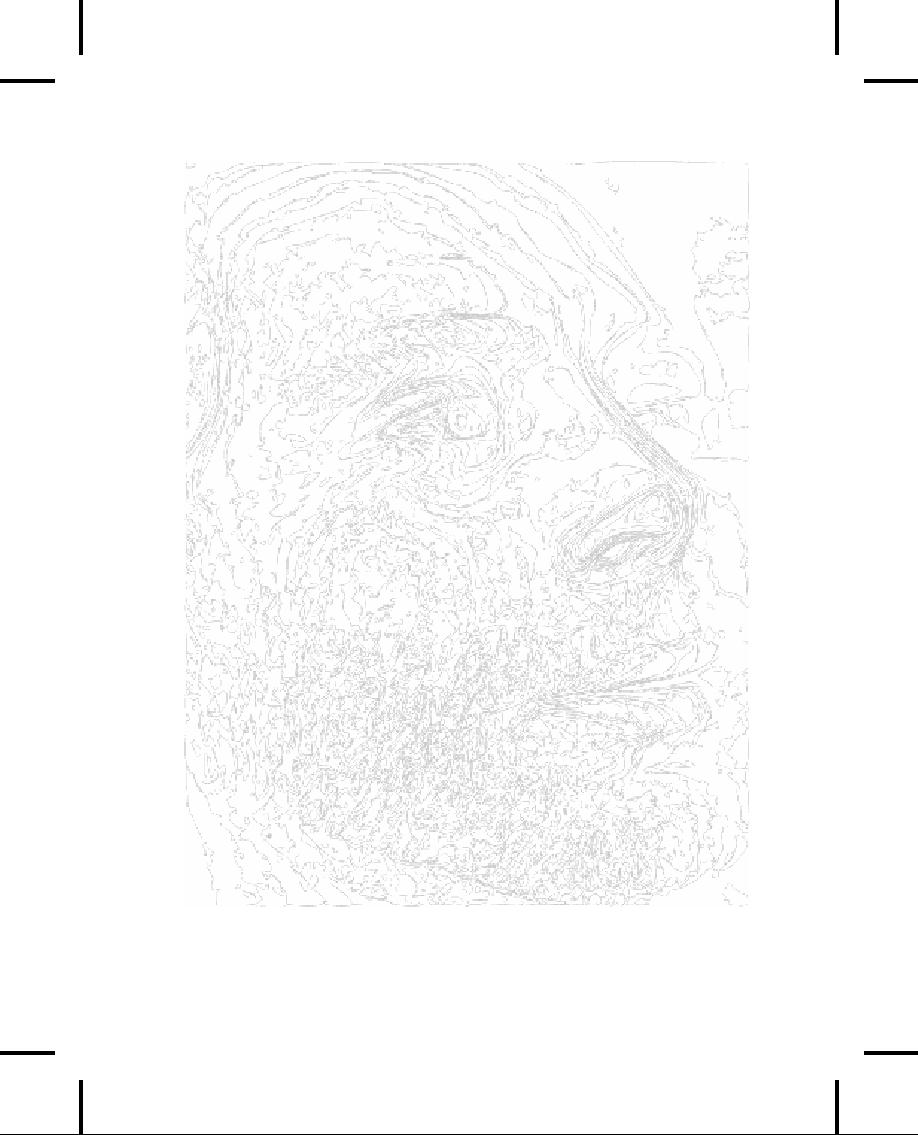
15:
Polymorphism &
Virtual
Functions
Polymorphism
(implemented in C++ with virtual
functions)
is the third essential
feature of an object-
oriented
programming language, after
data abstraction
and
inheritance.
659

It
provides another dimension of
separation of interface from
implementation,
to decouple what
from how.
Polymorphism allows
improved
code organization and readability as well
as the creation
of
extensible
programs
that can be "grown" not only during
the
original
creation of the project, but
also when new features
are
desired.
Encapsulation
creates new data types by
combining characteristics
and
behaviors. Access control
separates the interface from
the
implementation
by making the details
private.
This kind of
mechanical
organization makes ready
sense to someone with a
procedural
programming background. But virtual
functions deal
with
decoupling in terms of types. In
Chapter 14, you saw how
inheritance
allows the treatment of an
object as its own type or
its
base
type. This ability is
critical because it allows many
types
(derived
from the same base type) to be
treated as if they were
one
type,
and a single piece of code to work on all
those different types
equally.
The virtual function allows
one type to express
its
distinction
from another, similar type, as long as
they're both
derived
from the same base type.
This distinction is
expressed
through
differences in behavior of the
functions that you can
call
through
the base class.
In
this chapter, you'll learn
about virtual functions, starting
from
the
basics with simple examples
that strip away everything but
the
"virtualness"
of the program.
Evolution
of C++ programmers
C
programmers seem to acquire C++ in
three steps. First, as
simply
a
"better C," because C++ forces you to
declare all functions
before
using
them and is much pickier about how
variables are used.
You
can
often find the errors in a C
program simply by compiling it
with
a C++ compiler.
660
Thinking
in C++

The
second step is "object-based"
C++. This means that you
easily
see
the code organization
benefits of grouping a data
structure
together
with the functions that act
upon it, the value of
constructors
and destructors, and perhaps some
simple inheritance.
Most
programmers who have been working with C
for a while
quickly
see the usefulness of this
because, whenever they create
a
library,
this is exactly what they try to do. With
C++, you have the
aid
of the compiler.
You
can get stuck at the
object-based level because you
can quickly
get
there and you get a lot of benefit
without much mental effort.
It's
also easy to feel like
you're creating data types you
make
classes
and objects, you send messages to
those objects, and
everything
is nice and neat.
But
don't be fooled. If you stop here,
you're missing out on
the
greatest
part of the language, which is
the jump to true object-
oriented
programming. You can do this only with
virtual functions.
Virtual
functions enhance the
concept of type instead of
just
encapsulating
code inside structures and
behind walls, so they
are
without
a doubt the most difficult
concept for the new C++
programmer
to fathom. However, they're also
the turning point in
the
understanding of object-oriented
programming. If you don't
use
virtual functions, you don't understand OOP
yet.
Because
the virtual function is intimately bound
with the concept of
type,
and type is at the core of
object-oriented programming,
there
is
no analog to the virtual function in a
traditional procedural
language.
As a procedural programmer, you have no
referent with
which
to think about virtual functions, as you do with
almost every
other
feature in the language.
Features in a procedural
language
can
be understood on an algorithmic level,
but virtual functions can
be
understood only from a design
viewpoint.
15:
Polymorphism & Virtual
Functions
661

Upcasting
In
Chapter 14 you saw how an object
can be used as its own type
or
as
an object of its base type. In
addition, it can be
manipulated
through
an address of the base type. Taking
the address of an
object
(either a pointer or a reference) and
treating it as the
address
of
the base type is called upcasting
because of
the way inheritance
trees
are drawn with the base class at
the top.
You
also saw a problem arise,
which is embodied in the following
code:
//:
C15:Instrument2.cpp
//
Inheritance & upcasting
#include
<iostream>
using
namespace std;
enum
note { middleC, Csharp,
Eflat }; // Etc.
class
Instrument {
public:
void
play(note) const {
cout
<< "Instrument::play" <<
endl;
}
};
//
Wind objects are
Instruments
//
because they have the
same interface:
class
Wind : public Instrument
{
public:
//
Redefine interface
function:
void
play(note) const {
cout
<< "Wind::play" <<
endl;
}
};
void
tune(Instrument& i) {
//
...
i.play(middleC);
}
int
main() {
Wind
flute;
tune(flute);
// Upcasting
662
Thinking
in C++

}
///:~
The
function tune(
) accepts
(by reference) an Instrument
but
also
,
without
complaint anything derived from
Instrument
In
main(
),
.
you
can see this happening as a
Wind
object
is passed to tune(
),
with
no cast necessary. This is
acceptable; the interface
in
Instrumentmust
exist in Wind,
because Wind
is
publicly inherited
from
Instrument
Upcasting
from Wind
to
Instrumentmay
.
"narrow"
that interface, but never
less than the full interface
to
Instrument
.
The
same arguments are true when
dealing with pointers; the
only
difference
is that the user must
explicitly take the
addresses of
objects
as they are passed into the
function.
The
problem
The
problem with Instrument2.cppcan
be seen by running the
program.
The output is Instrument::playThis
is clearly not the
.
desired
output, because you happen to know that
the object is
actually
a Wind
and
not just an Instrument
The
call should
.
produce
Wind::play
For
that matter, any object of a
class derived
.
from
Instrumentshould
have its version of
play(
) used,
regardless
of
the situation.
The
behavior of Instrument2.cppis
not surprising, given
C's
approach
to functions. To understand the
issues, you need to be
aware
of the concept of binding.
Function
call binding
Connecting
a function call to a function body is
called binding.
When
binding is performed before
the program is run (by
the
compiler
and linker), it's called
early
binding. You may not
have
heard
the term before because it's
never been an option
with
procedural
languages: C compilers have only
one kind of function
call,
and that's early
binding.
15:
Polymorphism & Virtual
Functions
663

The
problem in the program above
is caused by early
binding
because
the compiler cannot know the
correct function to call
when
it
has only an Instrumentaddress.
The
solution is called late
binding, which
means the binding
occurs
at
runtime, based on the type of
the object. Late binding is
also
called
dynamic
binding or runtime
binding. When a
language
implements
late binding, there must be
some mechanism to
determine
the type of the object at runtime and
call the appropriate
member
function. In the case of a
compiled language, the
compiler
still
doesn't know the actual
object type, but it inserts
code that
finds
out and calls the correct
function body. The
late-binding
mechanism
varies from language to language, but you
can imagine
that
some sort of type information must be
installed in the
objects.
You'll
see how this works
later.
virtual
functions
To
cause late binding to occur
for a particular function, C++
requires
that you use the virtual
keyword
when declaring the
function
in the base class. Late
binding occurs only with virtual
functions,
and only when you're using an address of
the base class
where
those virtual
functions
exist, although they may also
be
defined
in an earlier base class.
To
create a member function as
virtual,
you simply precede the
declaration
of the function with the keyword
virtual.
Only the
declaration
needs the virtual
keyword,
not the definition. If a
function
is declared as virtual
in
the base class, it is virtual
in
all the
derived
classes. The redefinition of a
virtual
function
in a derived
class
is usually called overriding.
Notice
that you are only required to
declare a function virtual
in
the
base class. All derived-class functions
that match the
signature
of
the base-class declaration will be
called using the
virtual
mechanism.
You can
use
the virtual
keyword
in the derived-class
664
Thinking
in C++
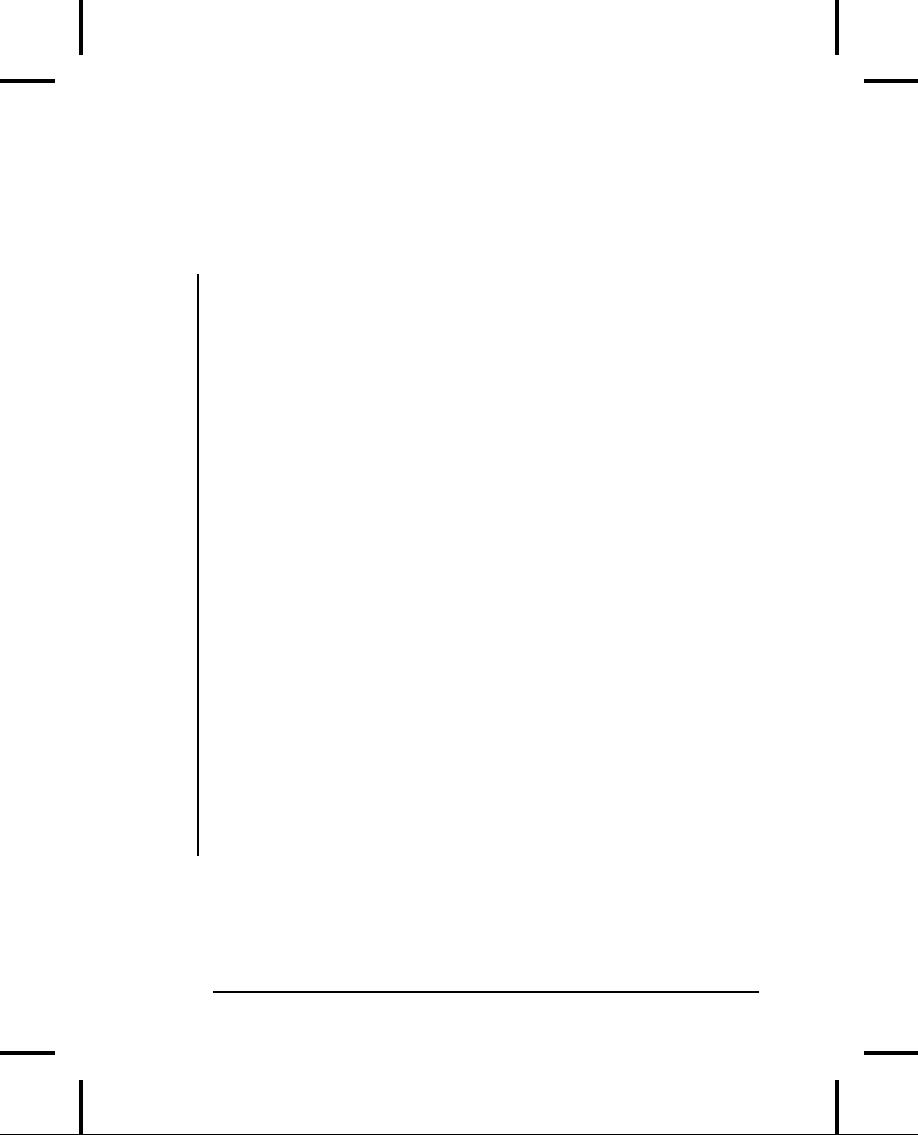
declarations
(it does no harm to do so), but it is
redundant and can
be
confusing.
To
get the desired behavior
from Instrument2.cpp
simply
add the
,
virtual
keyword
in the base class before
play(
):
//:
C15:Instrument3.cpp
//
Late binding with the
virtual keyword
#include
<iostream>
using
namespace std;
enum
note { middleC, Csharp,
Cflat }; // Etc.
class
Instrument {
public:
virtual
void play(note) const
{
cout
<< "Instrument::play" <<
endl;
}
};
//
Wind objects are
Instruments
//
because they have the
same interface:
class
Wind : public Instrument
{
public:
//
Override interface
function:
void
play(note) const {
cout
<< "Wind::play" <<
endl;
}
};
void
tune(Instrument& i) {
//
...
i.play(middleC);
}
int
main() {
Wind
flute;
tune(flute);
// Upcasting
}
///:~
This
file is identical to Instrument2.cppexcept
for the addition of
the
virtual
keyword,
and yet the behavior is significantly
different:
Now
the output is Wind::play
.
15:
Polymorphism & Virtual
Functions
665
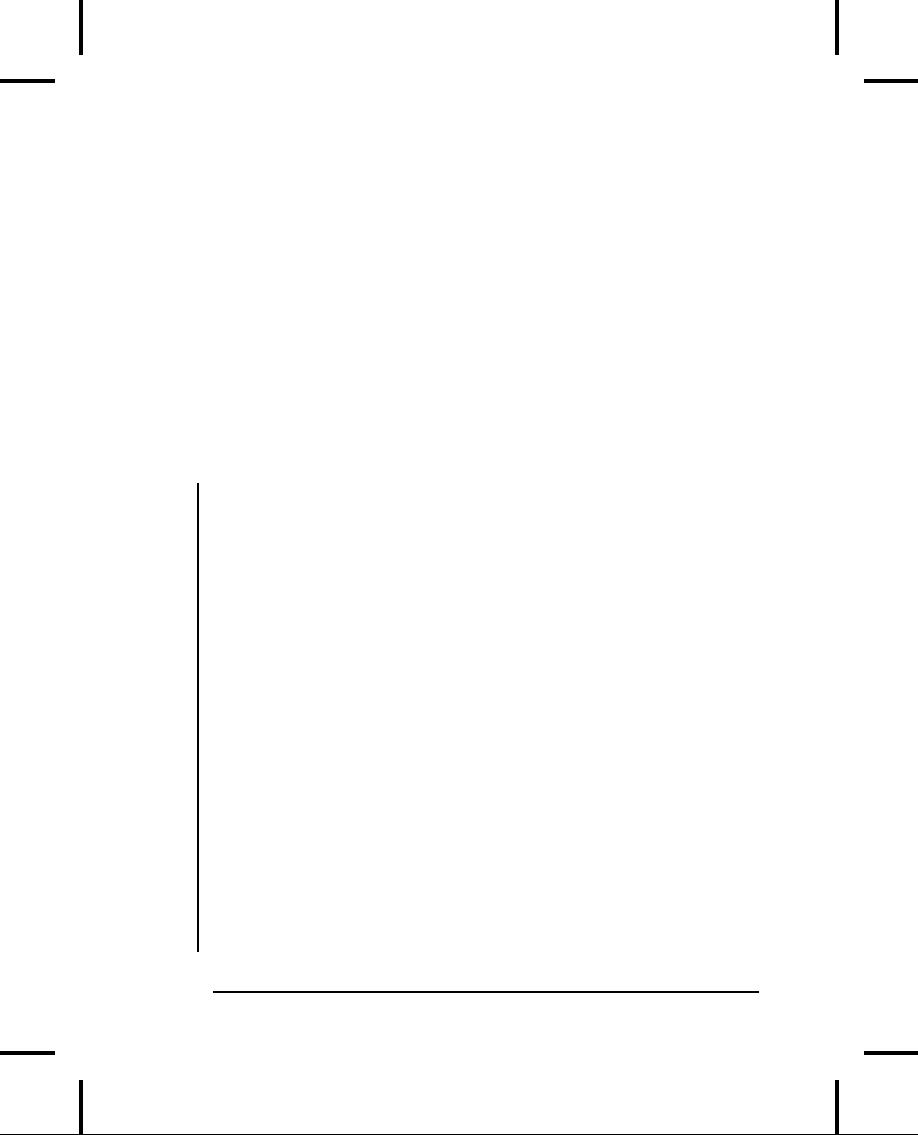
Extensibility
With
play(
) defined
as virtual
in
the base class, you can add
as
many
new types as you want without changing
the tune(
)
function.
In a well-designed OOP program,
most or all of your
functions
will follow the model of tune(
) and
communicate only
with
the base-class interface.
Such a program is extensible
because
you
can add new functionality by
inheriting new data types
from
the
common base class. The
functions that manipulate
the base-
class
interface will not need to be changed at
all to accommodate
the
new classes.
Here's
the instrument example with
more virtual functions and a
number
of new classes, all of which work correctly with
the old,
unchanged
tune(
) function:
//:
C15:Instrument4.cpp
//
Extensibility in OOP
#include
<iostream>
using
namespace std;
enum
note { middleC, Csharp,
Cflat }; // Etc.
class
Instrument {
public:
virtual
void play(note) const
{
cout
<< "Instrument::play" <<
endl;
}
virtual
char* what() const {
return
"Instrument";
}
//
Assume this will modify
the object:
virtual
void adjust(int) {}
};
class
Wind : public Instrument
{
public:
void
play(note) const {
cout
<< "Wind::play" <<
endl;
}
char*
what() const { return
"Wind"; }
void
adjust(int) {}
};
666
Thinking
in C++

class
Percussion : public Instrument
{
public:
void
play(note) const {
cout
<< "Percussion::play" <<
endl;
}
char*
what() const { return
"Percussion"; }
void
adjust(int) {}
};
class
Stringed : public Instrument
{
public:
void
play(note) const {
cout
<< "Stringed::play" <<
endl;
}
char*
what() const { return
"Stringed"; }
void
adjust(int) {}
};
class
Brass : public Wind {
public:
void
play(note) const {
cout
<< "Brass::play" <<
endl;
}
char*
what() const { return
"Brass"; }
};
class
Woodwind : public Wind
{
public:
void
play(note) const {
cout
<< "Woodwind::play" <<
endl;
}
char*
what() const { return
"Woodwind"; }
};
//
Identical function from
before:
void
tune(Instrument& i) {
//
...
i.play(middleC);
}
//
New function:
void
f(Instrument& i) { i.adjust(1);
}
//
Upcasting during array
initialization:
15:
Polymorphism & Virtual
Functions
667

Instrument*
A[] = {
new
Wind,
new
Percussion,
new
Stringed,
new
Brass,
};
int
main() {
Wind
flute;
Percussion
drum;
Stringed
violin;
Brass
flugelhorn;
Woodwind
recorder;
tune(flute);
tune(drum);
tune(violin);
tune(flugelhorn);
tune(recorder);
f(flugelhorn);
}
///:~
You
can see that another
inheritance level has been
added beneath
Wind,
but the virtual
mechanism
works correctly no matter how
many
levels there are. The
adjust(
)function
is not
overridden
for
Brass
and
Woodwind
When
this happens, the "closest"
definition
.
in
the inheritance hierarchy is
automatically used the
compiler
guarantees
there's always some
definition
for a virtual function, so
you'll
never end up with a call
that doesn't bind to a function
body.
(That
would be disastrous.)
The
array A[
] contains
pointers to the base class
Instrument
so
,
upcasting
occurs during the process of
array initialization.
This
array
and the function f(
) will
be used in later
discussions.
In
the call to tune(
),
upcasting is performed on each
different type
of
object, yet the desired
behavior always takes place.
This can be
described
as "sending a message to an object and
letting the object
worry
about what to do with it." The virtual
function
is the lens to
use
when you're trying to analyze a project:
Where should the base
classes
occur, and how might you want to extend
the program?
668
Thinking
in C++

However,
even if you don't discover the
proper base class
interfaces
and virtual functions at the initial
creation of the
program,
you'll often discover them later,
even much later, when
you
set out to extend or otherwise
maintain the program. This
is
not
an analysis or design error; it simply
means you didn't or
couldn't
know all the information the
first time. Because of the
tight
class
modularization in C++, it isn't a
large problem when
this
occurs
because changes you make in
one part of a system tend
not
to
propagate to other parts of
the system as they do in C.
How
C++ implements late binding
How
can late binding happen? All
the work goes on behind
the
scenes
by the compiler, which installs
the necessary
late-binding
mechanism
when you ask it to (you ask by creating
virtual
functions).
Because programmers often
benefit from understanding
the
mechanism of virtual functions in C++,
this section will
elaborate
on the way the compiler
implements this
mechanism.
The
keyword virtual
tells
the compiler it should not
perform early
binding.
Instead, it should automatically
install all the
mechanisms
necessary
to perform late binding.
This means that if you
call
play(
) for
a Brass
object
through
an address for the
base-class
Instrument
you'll
get the proper
function.
,
(called
the VTABLE) for each class
that contains virtual
functions.
The
compiler places the
addresses of the virtual functions for
that
particular
class in the VTABLE. In each
class with virtual functions,
it
secretly places a pointer,
called the vpointer
(abbreviated
as
VPTR),
which points to the VTABLE for
that object. When you
make
a virtual function call through a
base-class pointer (that
is,
1
Compilers may implement
virtual behavior any way
they want, but the way
it's
described
here is an almost universal
approach.
15:
Polymorphism & Virtual
Functions
669
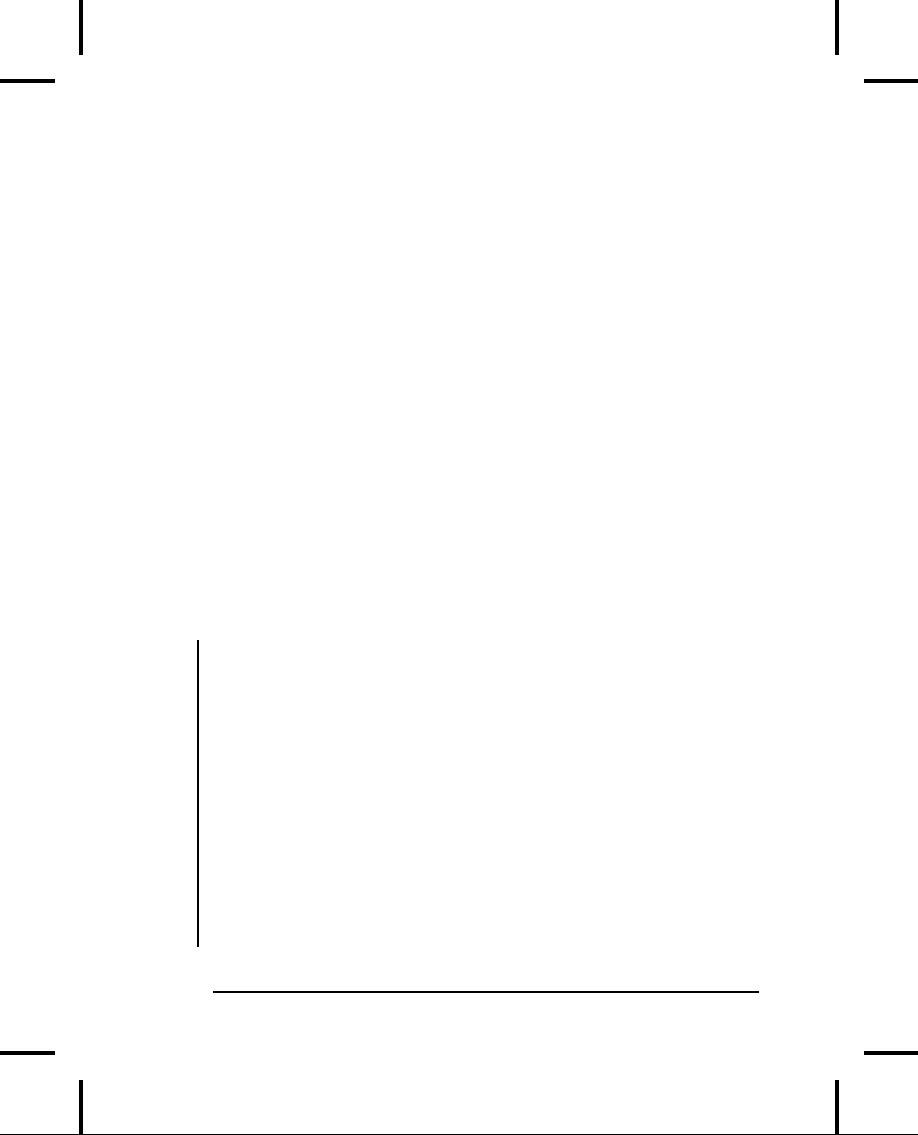
when
you make a polymorphic call),
the compiler quietly
inserts
code
to fetch the VPTR and look
up the function address in
the
VTABLE,
thus calling the correct
function and causing late
binding
to
take place.
All
of this setting up the
VTABLE for each class,
initializing the
VPTR,
inserting the code for the
virtual function call
happens
automatically,
so you don't have to worry about it. With
virtual
functions,
the proper function gets
called for an object, even if
the
compiler
cannot know the specific type of
the object.
The
following sections go into this process
in more detail.
Storing
type information
You
can see that there is no
explicit type information stored in
any
of
the classes. But the
previous examples, and simple
logic, tell you
that
there must be some sort of type
information stored in
the
objects;
otherwise the type could not be
established at runtime.
This
is
true, but the type information is
hidden. To see it, here's
an
example
to examine the sizes of
classes that use virtual
functions
compared
with those that
don't:
//:
C15:Sizes.cpp
//
Object sizes with/without
virtual functions
#include
<iostream>
using
namespace std;
class
NoVirtual {
int
a;
public:
void
x() const {}
int
i() const { return 1;
}
};
class
OneVirtual {
int
a;
public:
virtual
void x() const {}
int
i() const { return 1;
}
670
Thinking
in C++

};
class
TwoVirtuals {
int
a;
public:
virtual
void x() const {}
virtual
int i() const { return 1;
}
};
int
main() {
cout
<< "int: " << sizeof(int) <<
endl;
cout
<< "NoVirtual: "
<<
sizeof(NoVirtual) << endl;
cout
<< "void* : " << sizeof(void*) <<
endl;
cout
<< "OneVirtual: "
<<
sizeof(OneVirtual) << endl;
cout
<< "TwoVirtuals: "
<<
sizeof(TwoVirtuals) << endl;
}
///:~
With
no virtual functions, the size of
the object is exactly
what
in
OneVirtual
the
size of the object is the
size of NoVirtualplus
,
the
size of a void
pointer.
It turns out that the compiler
inserts a
single
pointer (the VPTR) into the
structure if you have one
or
more
virtual
functions. There is no size
difference between OneVirtual
and
TwoVirtuals
That's
because the VPTR points to a
table of
.
function
addresses. You need only one
table because all the
virtual
function
addresses are contained in
that single table.
This
example required at least
one data member. If there
had been
no
data members, the C++
compiler would have forced
the objects
to
be a nonzero size because
each object must have a
distinct
address.
If you imagine indexing into an array of
zero-sized objects,
you'll
understand. A "dummy" member is inserted
into objects that
would
otherwise be zero-sized. When the type
information is
inserted
because of the virtual
keyword,
this takes the place of
the
2
Some compilers might have
size issues here but it
will be rare.
15:
Polymorphism & Virtual
Functions
671
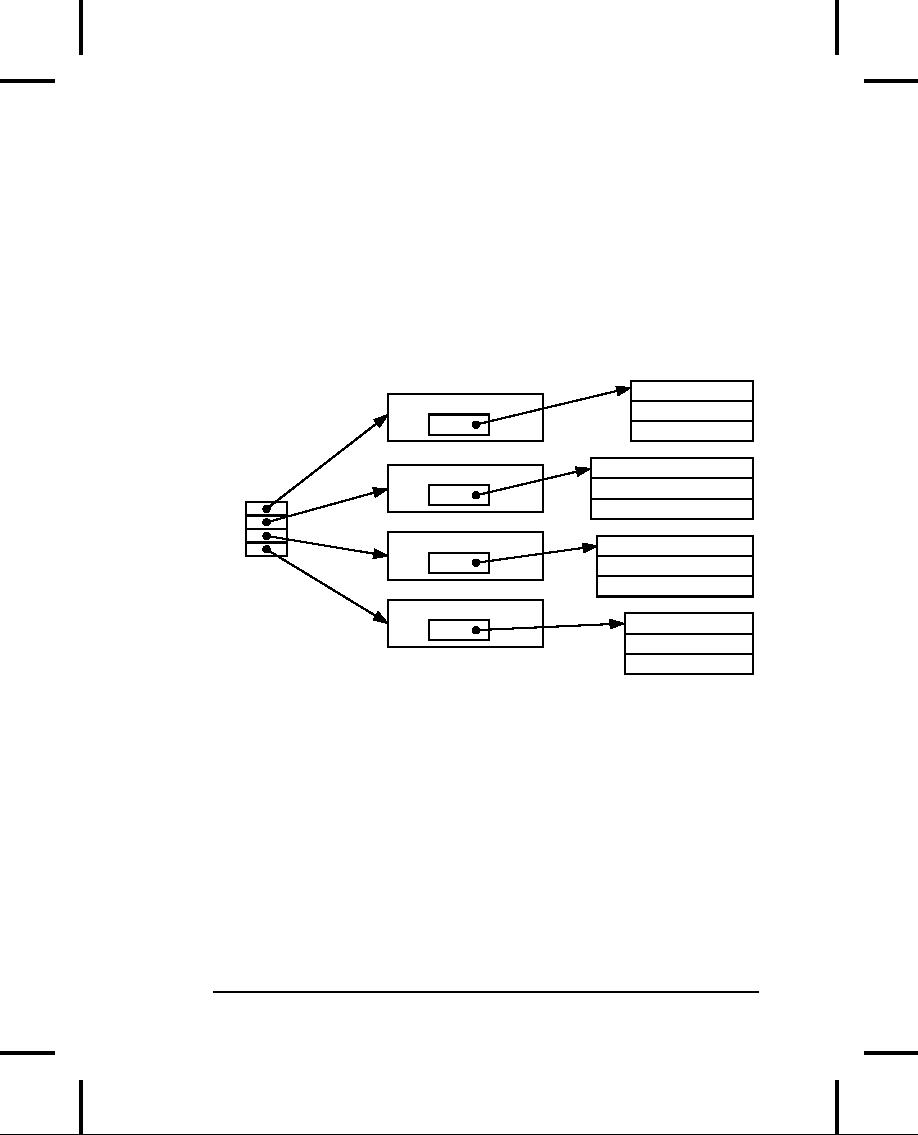
"dummy"
member. Try commenting out the
int
a in
all the classes
in
the example above to see
this.
Picturing
virtual functions
To
understand exactly what's
going on when you use a virtual
function,
it's helpful to visualize the
activities going on behind
the
curtain.
Here's a drawing of the array of
pointers A[
] in
Instrument4.cpp
:
VTABLEs:
Objects:
&Wind::play
Wind
object
Array
of
&Wind::what
vptr
Instrument
&Wind::adjust
pointers
A[
]
&Percussion::play
Percussion
object
&Percussion::what
vptr
&Percussion::adjust
Stringed
object
&Stringed::play
vptr
&Stringed::what
&Stringed::adjust
Brass
object
&Brass::play
vptr
&Brass::what
&Wind::adjust
The
array of Instrumentpointers
has no specific type
information;
they
each point to an object of type
Instrument
Wind,
Percussion
.
,
Stringed
and
Brass
all
fit into this category because they
are
,
derived
from Instrument(and
thus have the same interface
as
Instrument
and
can respond to the same
messages), so their
,
addresses
can also be placed into the
array. However, the
compiler
doesn't
know that they are anything more than
Instrumentobjects,
so
left to its own devices it would normally
call the base-class
versions
of all the functions. But in this case,
all those functions
have
been declared with the
virtual
keyword,
so something
different
happens.
672
Thinking
in C++
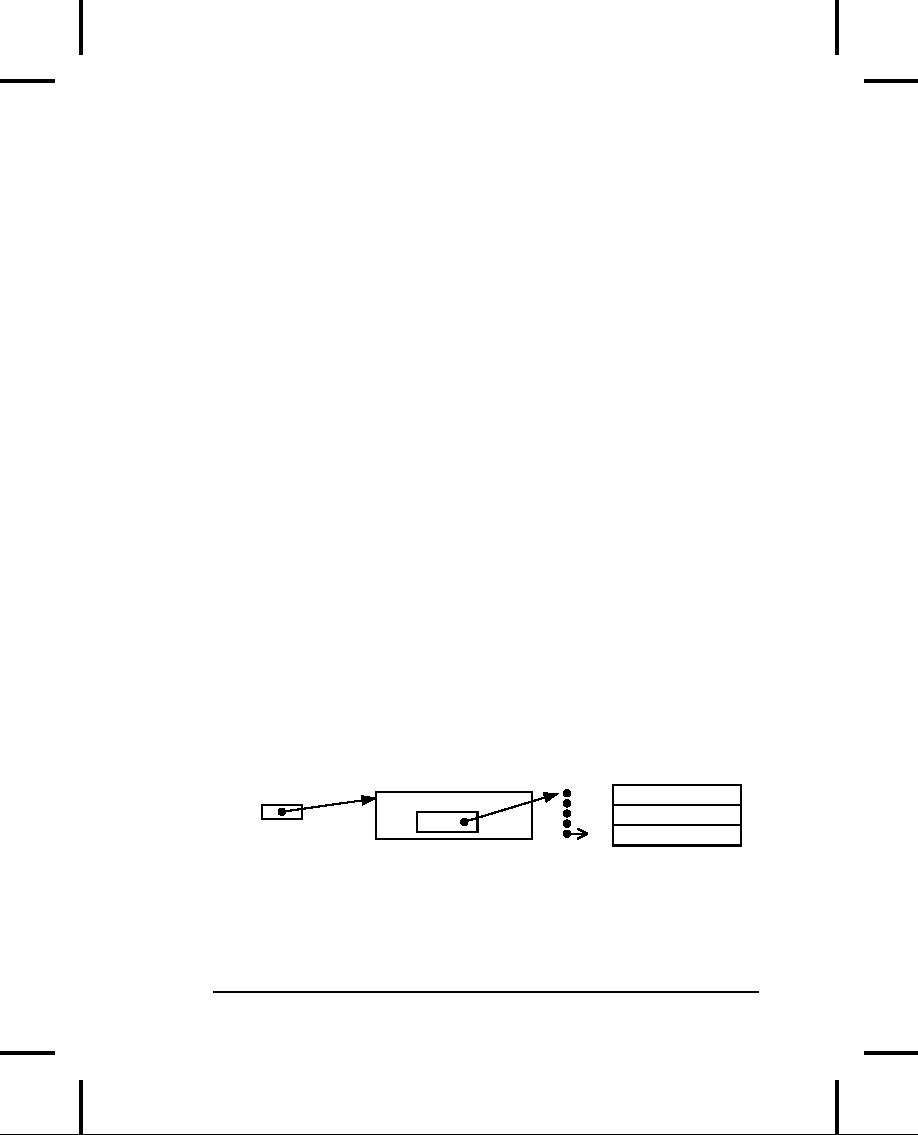
Each
time you create a class that
contains virtual functions, or you
derive
from a class that contains virtual
functions, the
compiler
creates
a unique VTABLE for that
class, seen on the right of
the
diagram.
In that table it places the
addresses of all the
functions
that
are declared virtual in this
class or in the base class. If
you
don't
override a function that was
declared virtual in the base
class,
the
compiler uses the address of
the base-class version in
the
derived
class. (You can see this in
the adjust
entry
in the Brass
VTABLE.)
Then it places the VPTR
(discovered in Sizes.cpp
into
)
the
class. There is only one
VPTR for each object when
using simple
inheritance
like this. The VPTR must be
initialized to point to
the
starting
address of the appropriate
VTABLE. (This happens in
the
constructor,
which you'll see later in more
detail.)
Once
the VPTR is initialized to
the proper VTABLE, the
object in
effect
"knows" what type it is. But this
self-knowledge is worthless
unless
it is used at the point a virtual
function is called.
When
you call a virtual function through a base
class address (the
situation
when the compiler doesn't
have all the
information
necessary
to perform early binding),
something special
happens.
Instead
of performing a typical function
call, which is simply an
assembly-language
CALL
to
a particular address, the
compiler
generates
different code to perform
the function call. Here's
what a
call
to adjust(
)for
a Brass
object
looks like, if made through
an
Instrumentpointer
(An Instrumentreference
produces the same
result):
Brass
VTABLE:
Instrument
pointer
[0]
&Brass::play
Brass
object
[1]
&Brass::what
vptr
[2]
&Wind::adjust
The
compiler begins with the
Instrumentpointer,
which points to
the
starting address of the
object. All Instrumentobjects
or objects
derived
from Instrumenthave
their VPTR in the same
place (often
at
the beginning of the
object), so the compiler can
pick the VPTR
15:
Polymorphism & Virtual
Functions
673

out
of the object. The VPTR
points to the starting
address of the
VTABLE.
All the VTABLE function
addresses are laid out in
the
same
order, regardless of the
specific type of the object.
play(
) is
first,
what(
) is
second, and adjust(
)is
third. The compiler
knows
that
regardless of the specific
object type, the adjust(
)function
is at
the
location VPTR+2. Thus,
instead of saying, "Call the
function at
the
absolute location Instrument::adjust
(early
binding; the wrong
"
action),
it generates code that says,
in effect, "Call the
function at
VPTR+2."
Because the fetching of the
VPTR and the
determination
of
the actual function address
occur at runtime, you get
the desired
late
binding. You send a message to
the object, and the
object
figures
out what to do with it.
Under
the hood
It
can be helpful to see the
assembly-language code generated by
a
virtual
function call, so you can
see that late-binding is
indeed
taking
place. Here's the output from
one compiler for the
call
i.adjust(1);
inside
the function f(Instrument&
i)
:
push
1
push
si
mov
bx,
word ptr [si]
call
word
ptr [bx+4]
add
sp,
4
The
arguments of a C++ function call,
like a C function call,
are
pushed
on the stack from right to left
(this order is required
to
support
C's variable argument
lists), so the argument
1
is
pushed
on
the stack first. At this
point in the function, the
register si
(part
of
the Intel X86 processor
architecture) contains the
address of i.
This
is also pushed on the stack
because it is the starting
address of
the
object of interest. Remember
that the starting
address
corresponds
to the value of this,
and this
is
quietly pushed on the
stack
as an argument before every
member function call, so
the
member
function knows which particular object it
is working on.
674
Thinking
in C++
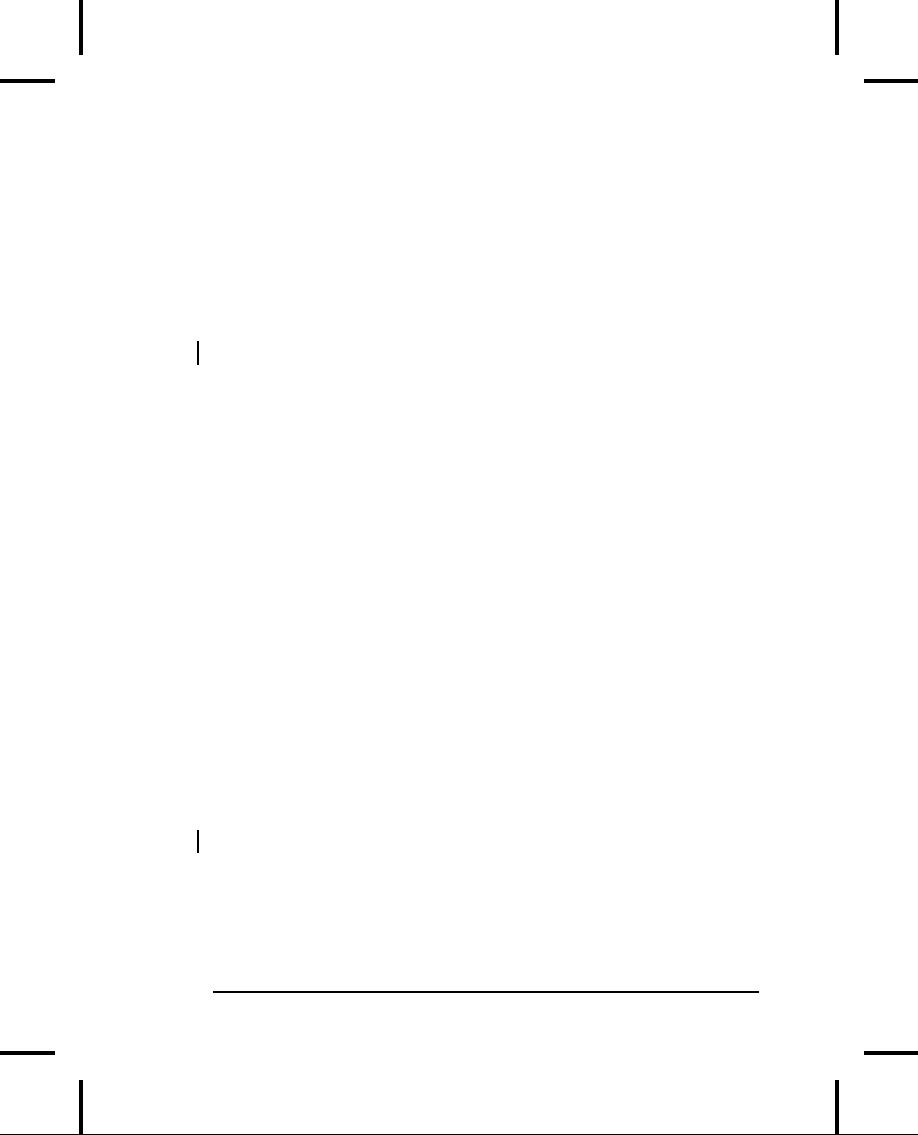
So
you'll always see one more
than the number of arguments
pushed
on the stack before a member
function call (except for
static
member
functions, which have no this).
Now
the actual virtual function
call must be performed. First,
the
VPTR
must be produced, so the VTABLE
can be found. For
this
compiler
the VPTR is inserted at the
beginning of the object, so
the
contents
of this
correspond
to the VPTR. The
line
mov
bx, word ptr
[si]
fetches
the word that si
(that
is, this)
points to, which is the
VPTR.
It
places the VPTR into the
register bx.
The
VPTR contained in bx
points
to the starting address of
the
VTABLE,
but the function pointer to
call isn't at location zero
of the
VTABLE,
but instead at location two (because
it's the third
function
in
the list). For this memory
model each function pointer
is two
bytes
long, so the compiler adds
four to the VPTR to
calculate
where
the address of the proper
function is. Note that
this is a
constant
value, established at compile
time, so the only thing
that
matters
is that the function pointer
at location number two is the
one
for adjust(
) Fortunately,
the compiler takes care of
all the
.
bookkeeping
for you and ensures that all the
function pointers in
all
the VTABLEs of a particular
class hierarchy occur in the
same
order,
regardless of the order that you may
override them in
derived
classes.
Once
the address of the proper
function pointer in the
VTABLE is
calculated,
that function is called. So
the address is fetched
and
called
all at once in the
statement
call
word ptr [bx+4]
Finally,
the stack pointer is moved
back up to clean off
the
arguments
that were pushed before
the call. In C and C++
assembly
code you'll often see the
caller clean off the
arguments
15:
Polymorphism & Virtual
Functions
675

but
this may vary depending on processors and
compiler
implementations.
Installing
the vpointer
Because
the VPTR determines the
virtual function behavior of
the
object,
you can see how it's
critical that the VPTR
always be
pointing
to the proper VTABLE. You don't
ever want to be able to
make
a call to a virtual function before
the VPTR is properly
initialized.
Of course, the place where
initialization can be
guaranteed
is in the constructor, but none of
the Instrument
examples
has a constructor.
This
is where creation of the
default constructor is essential. In
the
Instrumentexamples,
the compiler creates a
default constructor
that
does nothing except
initialize the VPTR. This
constructor, of
course,
is automatically called for all Instrumentobjects
before you
can
do anything with them, so you know that
it's always safe to
call
virtual
functions.
The
implications of the automatic
initialization of the VPTR
inside
the
constructor are discussed in a
later section.
Objects
are different
It's
important to realize that
upcasting deals only with addresses.
If
the
compiler has an object, it knows
the exact type and therefore
(in
C++)
will not use late binding for any
function calls or at least,
the
compiler
doesn't need
to use
late binding. For
efficiency's sake,
most
compilers will perform early
binding when they are making
a
call
to a virtual function for an object
because they know the
exact
type.
Here's an example:
//:
C15:Early.cpp
//
Early binding & virtual
functions
#include
<iostream>
#include
<string>
using
namespace std;
676
Thinking
in C++

class
Pet {
public:
virtual
string speak() const {
return ""; }
};
class
Dog : public Pet {
public:
string
speak() const { return
"Bark!"; }
};
int
main() {
Dog
ralph;
Pet*
p1 = &ralph;
Pet&
p2 = ralph;
Pet
p3;
//
Late binding for
both:
cout
<< "p1->speak() = " << p1->speak()
<<endl;
cout
<< "p2.speak() = " << p2.speak() <<
endl;
//
Early binding
(probably):
cout
<< "p3.speak() = " << p3.speak() <<
endl;
}
///:~
In
p1>speak(
)and
p2.speak(
) addresses
are used, which means
,
the
information is incomplete: p1
and
p2
can
represent the address
of
a Pet
or something
derived from Pet,
so the virtual mechanism
must
be used. When calling p3.speak(
)there's
no ambiguity. The
compiler
knows the exact type and that
it's an object, so it
can't
possibly
be an object derived from Pet
it's exactly
a
Pet.
Thus,
early
binding is probably used. However, if
the compiler doesn't
want
to work so hard, it can still
use late binding and the
same
behavior
will occur.
Why
virtual functions?
At
this point you may have a
question: "If this technique is
so
important,
and if it makes the `right'
function call all the time,
why
is
it an option? Why do I even need to know
about it?"
15:
Polymorphism & Virtual
Functions
677

This
is a good question, and the
answer is part of the
fundamental
philosophy
of C++: "Because it's not
quite as efficient." You can
see
from
the previous assembly-language output
that instead of one
simple
CALL to an absolute address, there
are two more
sophisticated
assembly instructions required to
set up the virtual
function
call. This requires both
code space and execution
time.
Some
object-oriented languages have
taken the approach that
late
binding
is so intrinsic to object-oriented
programming that it
should
always take place, that it
should not be an option, and
the
user
shouldn't have to know about
it. This is a design
decision
when
creating a language, and that
particular path is
appropriate
where
efficiency is critical. After all, C
was created to
replace
assembly
language for the implementation of an
operating system
(thereby
rendering that operating
system Unix far
more
portable
than its predecessors). One of the main
reasons for the
the
first question asked when C
programmers encounter C++
is,
"What
kind of size and speed impact will I
get?" If the answer
were,
"Everything's great except for
function calls when you'll
always
have a little extra
overhead," many people would stick
with
C
rather than make the change
to C++. In addition, inline
functions
would
not be possible, because virtual
functions must have an
address
to put into the VTABLE. So the virtual
function is an
option,
and
the
language defaults to nonvirtual, which is
the fastest
configuration.
Stroustrup stated that his
guideline was, "If you
don't
use it, you don't pay for it."
Thus,
the virtual
keyword
is provided for efficiency tuning.
When
designing
your classes, however, you shouldn't be
worrying about
efficiency
tuning. If you're going to use
polymorphism, use virtual
3
Smalltalk, Java, and
Python, for instance, use
this approach with great
success.
4
At Bell Labs, where
C++ was invented, there
are a lot
of C
programmers. Making
them
all more efficient, even
just a bit, saves the
company many
millions.
678
Thinking
in C++

functions
everywhere. You only need to look for
functions that can
be
made non-virtual when searching for ways
to speed up your
code
(and there are usually much
bigger gains to be had in
other
areas
a good profiler will do a better
job of finding
bottlenecks
than
you will by making guesses).
Anecdotal
evidence suggests that the
size and speed impacts
of
going
to C++ are within 10 percent of the
size and speed of C, and
often
much closer to the same. The
reason you might get better
size
and
speed efficiency is because you may
design a C++ program in a
smaller,
faster way than you would using C.
Abstract
base classes and pure
virtual
functions
Often
in a design, you want the base class to
present only
an
interface
for its derived classes. That
is, you don't want anyone to
actually
create an object of the base
class, only to upcast to it so
that
its
interface can be used. This
is accomplished by making that
class
abstract, which
happens if you give it at least
one pure
virtual
function. You can
recognize a pure virtual function because
it uses
the
virtual
keyword
and is followed by =
0.
If anyone tries to
make
an
object of an abstract class,
the compiler prevents them.
This is a
tool
that allows you to enforce a
particular design.
When
an abstract class is inherited, all pure
virtual functions must
be
implemented, or the inherited
class becomes abstract as
well.
Creating
a pure virtual function allows you to put a
member
function
in an interface without being forced to
provide a possibly
meaningless
body of code for that member
function. At the same
time,
a pure virtual function forces inherited
classes to provide a
definition
for it.
In
all of the instrument examples,
the functions in the base
class
Instrumentwere
always "dummy" functions. If these
functions are
ever
called, something is wrong. That's
because the intent of
15:
Polymorphism & Virtual
Functions
679
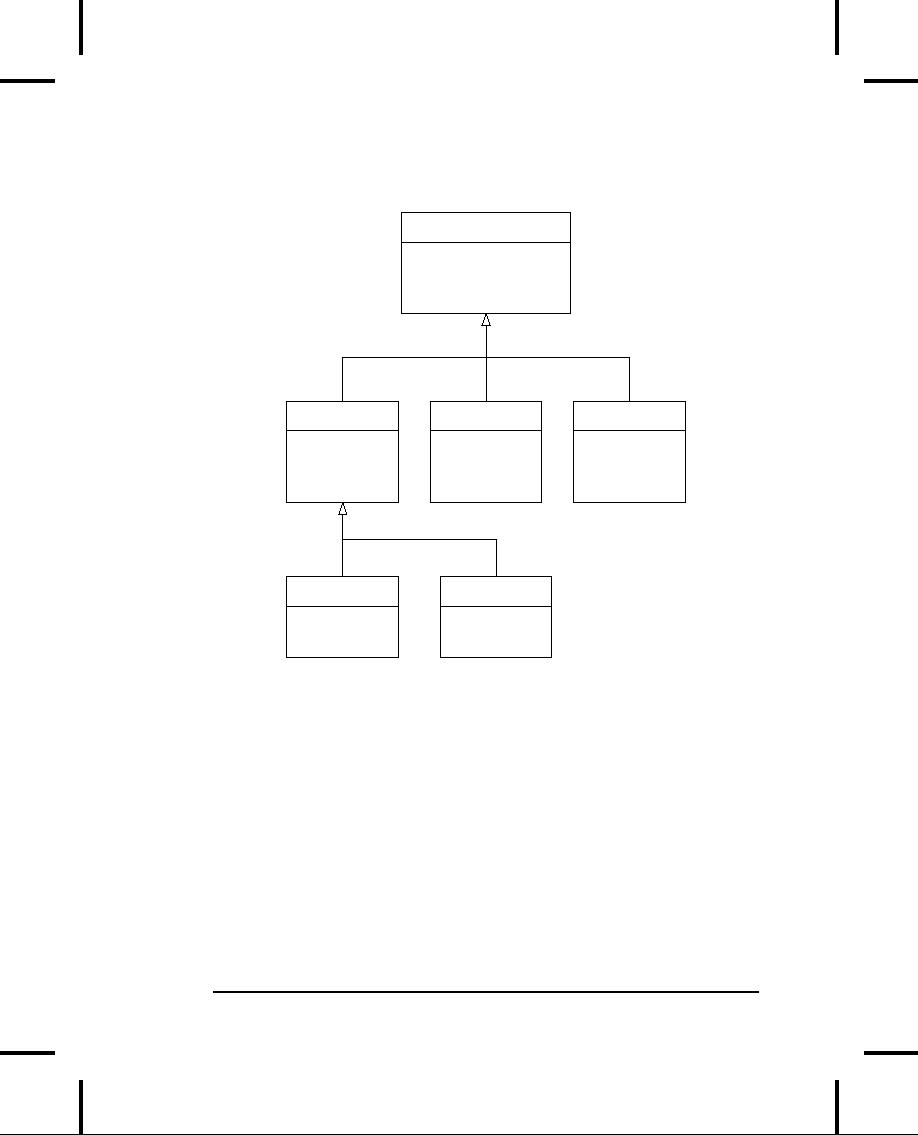
Instrumentis
to create a common interface for all of
the classes
derived
from it.
Instrument
virtual
void play()
virtual
char* what()
virtual
void adjust()
Wind
Percussion
Stringed
void
play()
void
play()
void
play()
char*
what()
char*
what()
char*
what()
void
adjust()
void
adjust()
void
adjust()
Woodwind
Brass
void
play()
void
play()
char*
what()
char*
what()
The
only reason to establish the
common interface is so it can
be
expressed
differently for each different
subtype. It creates a
basic
form
that determines what's in
common with all of the
derived
classes
nothing else. So Instrumentis
an appropriate candidate to
be
an abstract class. You create an
abstract class when you only
want
to manipulate a set of classes through a
common interface,
but
the common interface doesn't
need to have an
implementation
(or
at least, a full implementation).
If
you have a concept like
Instrumentthat
works as an abstract
class,
objects of that class almost
always have no meaning. That
is,
Instrumentis
meant to express only the
interface, and not a
680
Thinking
in C++
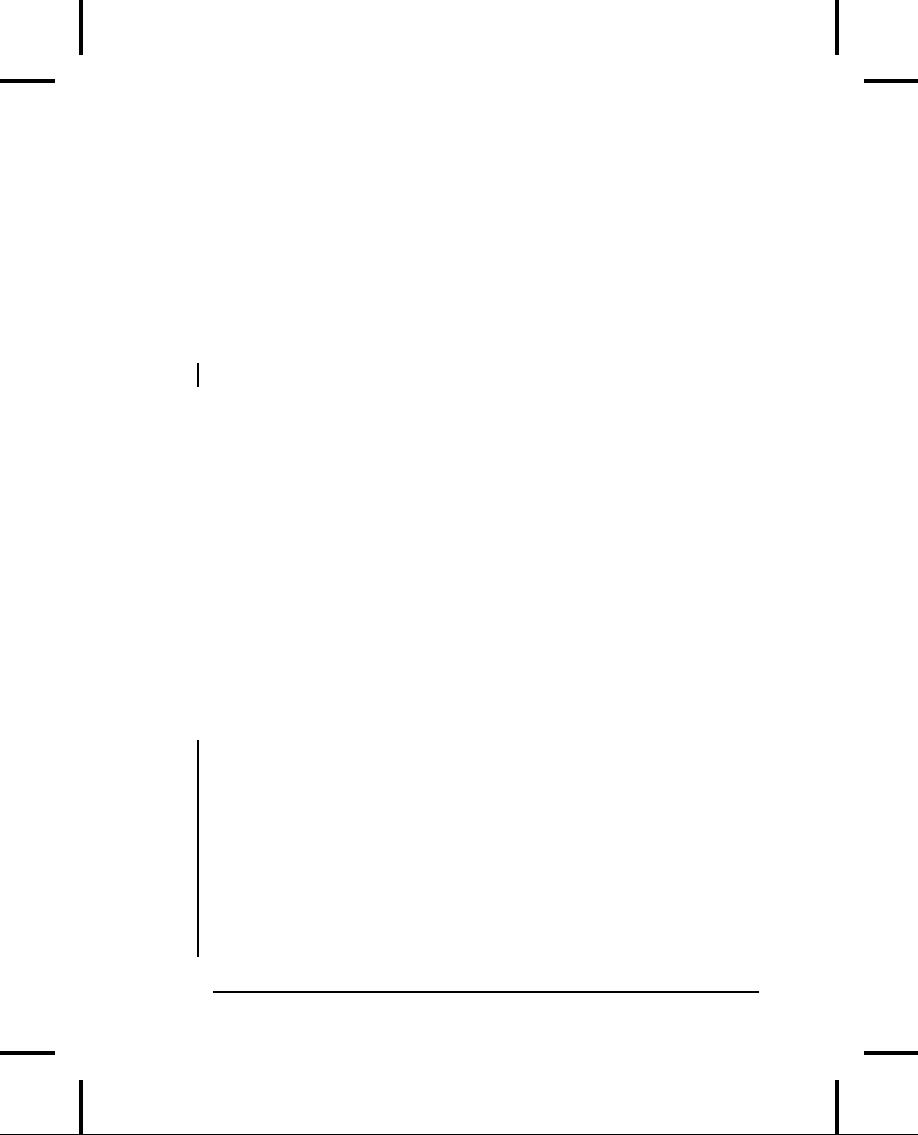
particular
implementation, so creating an object
that is only an
Instrumentmakes
no sense, and you'll probably want to
prevent
the
user from doing it. This
can be accomplished by making all
the
virtual
functions in Instrumentprint
error messages, but that
delays
the appearance of the error
information until runtime and it
requires
reliable exhaustive testing on
the part of the user. It
is
much
better to catch the problem
at compile time.
Here
is the syntax used for a pure virtual
declaration:
virtual
void f() = 0;
By
doing this, you tell the
compiler to reserve a slot for a
function
in
the VTABLE, but not to put an address in
that particular slot.
Even
if only one function in a class is
declared as pure virtual,
the
VTABLE
is incomplete.
If
the VTABLE for a class is
incomplete, what is the
compiler
supposed
to do when someone tries to make an
object of that class?
It
cannot safely create an
object of an abstract class, so you
get an
error
message from the compiler.
Thus, the compiler
guarantees the
purity
of the abstract class. By
making a class abstract, you
ensure
that
the client programmer cannot
misuse it.
Here's
Instrument4.cppmodified
to use pure virtual functions.
Because
the class has nothing but
pure virtual functions, we call it
a
pure
abstract class:
//:
C15:Instrument5.cpp
//
Pure abstract base
classes
#include
<iostream>
using
namespace std;
enum
note { middleC, Csharp,
Cflat }; // Etc.
class
Instrument {
public:
//
Pure virtual
functions:
virtual
void play(note) const =
0;
virtual
char* what() const =
0;
//
Assume this will modify
the object:
15:
Polymorphism & Virtual
Functions
681

virtual
void adjust(int) = 0;
};
//
Rest of the file is the
same ...
class
Wind : public Instrument
{
public:
void
play(note) const {
cout
<< "Wind::play" <<
endl;
}
char*
what() const { return
"Wind"; }
void
adjust(int) {}
};
class
Percussion : public Instrument
{
public:
void
play(note) const {
cout
<< "Percussion::play" <<
endl;
}
char*
what() const { return
"Percussion"; }
void
adjust(int) {}
};
class
Stringed : public Instrument
{
public:
void
play(note) const {
cout
<< "Stringed::play" <<
endl;
}
char*
what() const { return
"Stringed"; }
void
adjust(int) {}
};
class
Brass : public Wind {
public:
void
play(note) const {
cout
<< "Brass::play" <<
endl;
}
char*
what() const { return
"Brass"; }
};
class
Woodwind : public Wind
{
public:
void
play(note) const {
cout
<< "Woodwind::play" <<
endl;
}
char*
what() const { return
"Woodwind"; }
682
Thinking
in C++

};
//
Identical function from
before:
void
tune(Instrument& i) {
//
...
i.play(middleC);
}
//
New function:
void
f(Instrument& i) { i.adjust(1);
}
int
main() {
Wind
flute;
Percussion
drum;
Stringed
violin;
Brass
flugelhorn;
Woodwind
recorder;
tune(flute);
tune(drum);
tune(violin);
tune(flugelhorn);
tune(recorder);
f(flugelhorn);
}
///:~
Pure
virtual functions are helpful because
they make explicit
the
abstractness
of a class and tell both the
user and the compiler
how
it
was intended to be
used.
Note
that pure virtual functions prevent an
abstract class from
being
passed into a function by
value. Thus, it
is also a way to
prevent
object
slicing (which will be
described shortly). By making
a
class
abstract, you can ensure
that a pointer or reference is
always
used
during upcasting to that
class.
Just
because one pure virtual function
prevents the VTABLE
from
being
completed doesn't mean that
you don't want function bodies
for
some of the others. Often
you will want to call a base-class
version
of a function, even if it is virtual.
It's always a good idea
to
put
common code as close as
possible to the root of your
hierarchy.
15:
Polymorphism & Virtual
Functions
683
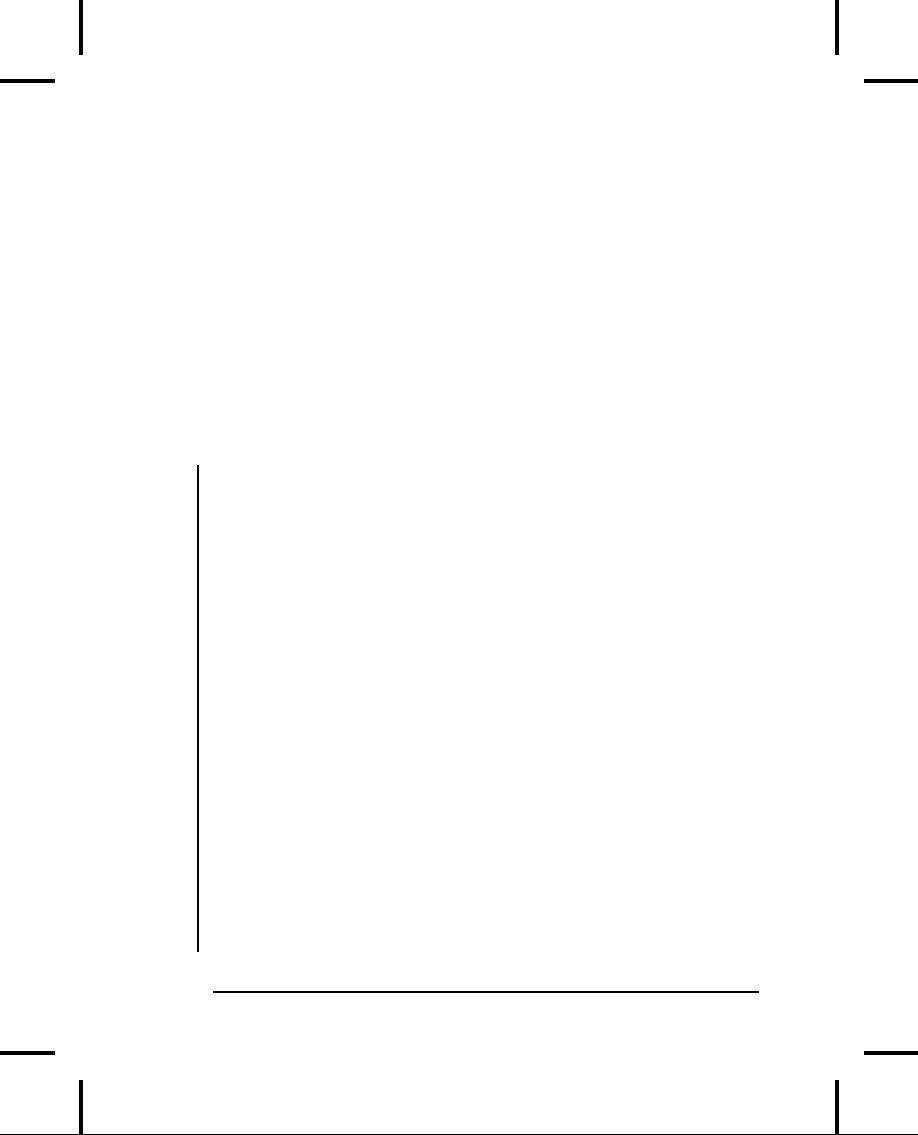
Not
only does this save code
space, it allows easy
propagation of
changes.
Pure
virtual definitions
It's
possible to provide a definition for a
pure virtual function in the
base
class. You're still telling
the compiler not to allow objects
of
that
abstract base class, and the pure virtual
functions must still be
defined
in derived classes in order to
create objects. However,
there
may
be a common piece of code
that you want some or all of
the
derived
class definitions to call
rather than duplicating that
code in
every
function.
Here's
what a pure virtual definition looks
like:
//:
C15:PureVirtualDefinitions.cpp
//
Pure virtual base
definitions
#include
<iostream>
using
namespace std;
class
Pet {
public:
virtual
void speak() const =
0;
virtual
void eat() const = 0;
//
Inline pure virtual
definitions illegal:
//!
virtual void sleep()
const = 0 {}
};
//
OK, not defined
inline
void
Pet::eat() const {
cout
<< "Pet::eat()" <<
endl;
}
void
Pet::speak() const {
cout
<< "Pet::speak()" <<
endl;
}
class
Dog : public Pet {
public:
//
Use the common Pet
code:
void
speak() const { Pet::speak();
}
void
eat() const { Pet::eat();
}
684
Thinking
in C++

};
int
main() {
Dog
simba; // Richard's
dog
simba.speak();
simba.eat();
}
///:~
The
slot in the Pet
VTABLE
is still empty, but there happens to be
a
function
by that name that you can
call in the derived
class.
The
other benefit to this
feature is that it allows you to
change from
an
ordinary virtual to a pure virtual without disturbing
the existing
code.
(This is a way for you to locate classes
that don't override
that
virtual
function.)
Inheritance
and the VTABLE
You
can imagine what happens when you
perform inheritance and
override
some of the virtual functions.
The compiler creates a
new
VTABLE
for your new class, and it inserts your new
function
addresses
using the base-class
function addresses for any virtual
functions
you don't override. One way or another, for
every object
that
can be created (that is,
its class has no pure
virtuals) there's
always
a full set of function addresses in
the VTABLE, so you'll
never
be able to make a call to an
address that isn't there
(which
would
be disastrous).
But
what happens when you inherit and add new
virtual functions
in
the derived
class?
Here's a simple example:
//:
C15:AddingVirtuals.cpp
//
Adding virtuals in
derivation
#include
<iostream>
#include
<string>
using
namespace std;
class
Pet {
string
pname;
public:
15:
Polymorphism & Virtual
Functions
685
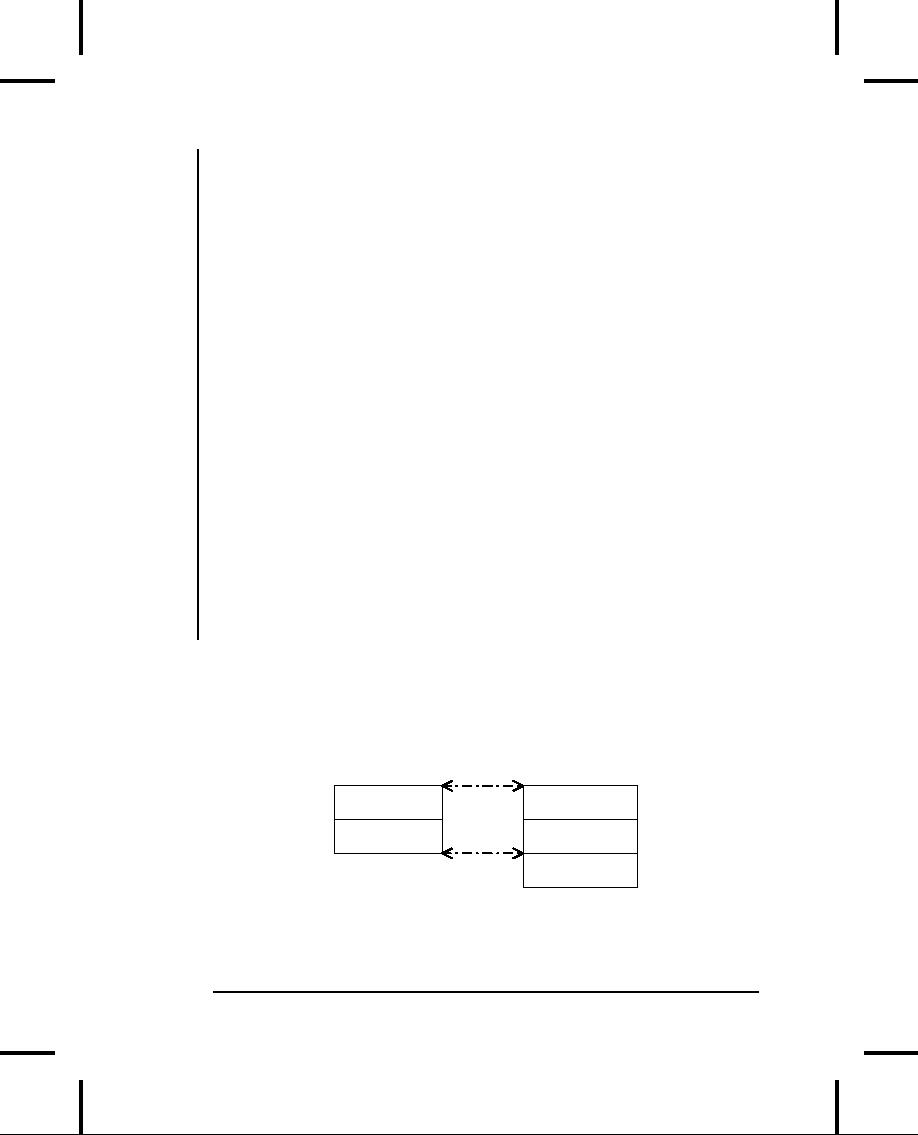
Pet(const
string& petName) : pname(petName)
{}
virtual
string name() const { return
pname; }
virtual
string speak() const {
return ""; }
};
class
Dog : public Pet {
string
name;
public:
Dog(const
string& petName) : Pet(petName)
{}
//
New virtual function in the
Dog class:
virtual
string sit() const {
return
Pet::name() + " sits";
}
string
speak() const { //
Override
return
Pet::name() + " says
'Bark!'";
}
};
int
main() {
Pet*
p[] = {new Pet("generic"),new
Dog("bob")};
cout
<< "p[0]->speak() = "
<<
p[0]->speak() << endl;
cout
<< "p[1]->speak() = "
<<
p[1]->speak() << endl;
//!
cout << "p[1]->sit() = "
//!
<<
p[1]->sit() << endl; //
Illegal
}
///:~
The
class Pet
contains
a two virtual functions: speak(
)and
name(
).
Dog
adds
a third virtual function called sit(
),
as well as overriding
the
meaning of speak(
) A
diagram will help you visualize
what's
.
happening.
Here are the VTABLEs
created by the compiler for
Pet
and
Dog:
&Pet::name
&Pet::name
&Pet::speak
&Dog::speak
&Dog::sit
686
Thinking
in C++

Notice
that the compiler maps
the location of the
speak(
)address
into
exactly the same spot in
the Dog
VTABLE
as it is in the Pet
VTABLE.
Similarly, if a class Pug
is
inherited from Dog,
its version
of
sit(
) would
be placed in its VTABLE in
exactly the same spot
as
it
is in Dog.
This is because (as you saw
with the assembly-
language
example) the compiler
generates code that uses a
simple
numerical
offset into the VTABLE to
select the virtual
function.
Regardless
of the specific subtype the
object belongs to, its
VTABLE
is
laid out the same way, so
calls to the virtual functions
will
always
be made the same way.
In
this case, however, the
compiler is working only with a
pointer
to
a base-class object. The base
class has only the speak(
)and
name(
) functions,
so those is the only functions
the compiler will
allow
you to call. How could it possibly know
that you are working
with
a Dog
object,
if it has only a pointer to a base-class
object?
That
pointer might point to some
other type, which doesn't
have a
sit(
) function.
It may or may not have some other
function address
at
that point in the VTABLE,
but in either case, making a virtual
call
to
that VTABLE address is not what you want
to do. So the
compiler
is doing its job by
protecting you from making virtual
calls
to functions that exist only in
derived classes.
There
are some less-common cases
in which you may know that the
pointer
actually points to an object of a
specific subclass. If you
want
to call a function that only
exists in that subclass, then
you
must
cast the pointer. You can
remove the error message
produced
by
the previous program like
this:
((Dog*)p[1])->sit()
Here,
you happen to know that p[1]
points
to a Dog
object,
but in
general
you don't know that. If your problem is
set up so that you
must
know the exact types of all
objects, you should rethink
it,
because
you're probably not using virtual
functions properly.
However,
there are some situations in
which the design works
best
(or
you have no choice) if you know the
exact type of all objects
15:
Polymorphism & Virtual
Functions
687

kept
in a generic container. This is
the problem of run-time
type
identification
(RTTI).
RTTI
is all about casting base-class
pointers down
to
derived-class
pointers
("up" and "down" are relative to a
typical class
diagram,
with
the base class at the top).
Casting up
happens
automatically,
with
no coercion, because it's
completely safe. Casting
down
is
unsafe
because there's no compile
time information about
the
actual
types, so you must know exactly what type
the object is. If
you
cast it into the wrong type, you'll be in
trouble.
RTTI
is described later in this
chapter, and Volume 2 of this
book
has
a chapter devoted to the
subject.
Object
slicing
There
is a distinct difference between
passing the addresses
of
objects
and passing objects by value when
using polymorphism.
All
the examples you've seen
here, and virtually all the
examples
you
should see, pass addresses
and not values. This is
because
object
of a derived type (which is usually a bigger
object) is the
same
as passing the address of an
object of the base type (which
is
usually
a smaller object). As explained
before, this is the goal
when
using
polymorphism code that
manipulates a base type can
transparently
manipulate derived-type objects as
well.
If
you upcast to an object instead of a
pointer or reference,
something
will happen that may surprise you:
the object is
"sliced"
until
all that remains is the
subobject that corresponds to
the
destination
type of your cast. In the following
example you can see
what
happens when an object is
sliced:
//:
C15:ObjectSlicing.cpp
5
Actually, not all
pointers are the same
size on all machines. In the
context of this
discussion,
however, they can be
considered to be the
same.
688
Thinking
in C++

#include
<iostream>
#include
<string>
using
namespace std;
class
Pet {
string
pname;
public:
Pet(const
string& name) : pname(name) {}
virtual
string name() const { return
pname; }
virtual
string description() const
{
return
"This is " + pname;
}
};
class
Dog : public Pet {
string
favoriteActivity;
public:
Dog(const
string& name, const string&
activity)
:
Pet(name), favoriteActivity(activity)
{}
string
description() const {
return
Pet::name() + " likes to " +
favoriteActivity;
}
};
void
describe(Pet p) { // Slices the
object
cout
<< p.description() <<
endl;
}
int
main() {
Pet
p("Alfred");
Dog
d("Fluffy", "sleep");
describe(p);
describe(d);
}
///:~
The
function describe(
)is
passed an object of type
Pet
by value. It
then
calls the virtual function
description(
)for
the Pet
object.
In
main(
),
you might expect the first
call to produce "This is
Alfred,"
and
the second to produce "Fluffy
likes to sleep." In fact,
both calls
use
the base-class version of
description(
.)
15:
Polymorphism & Virtual
Functions
689
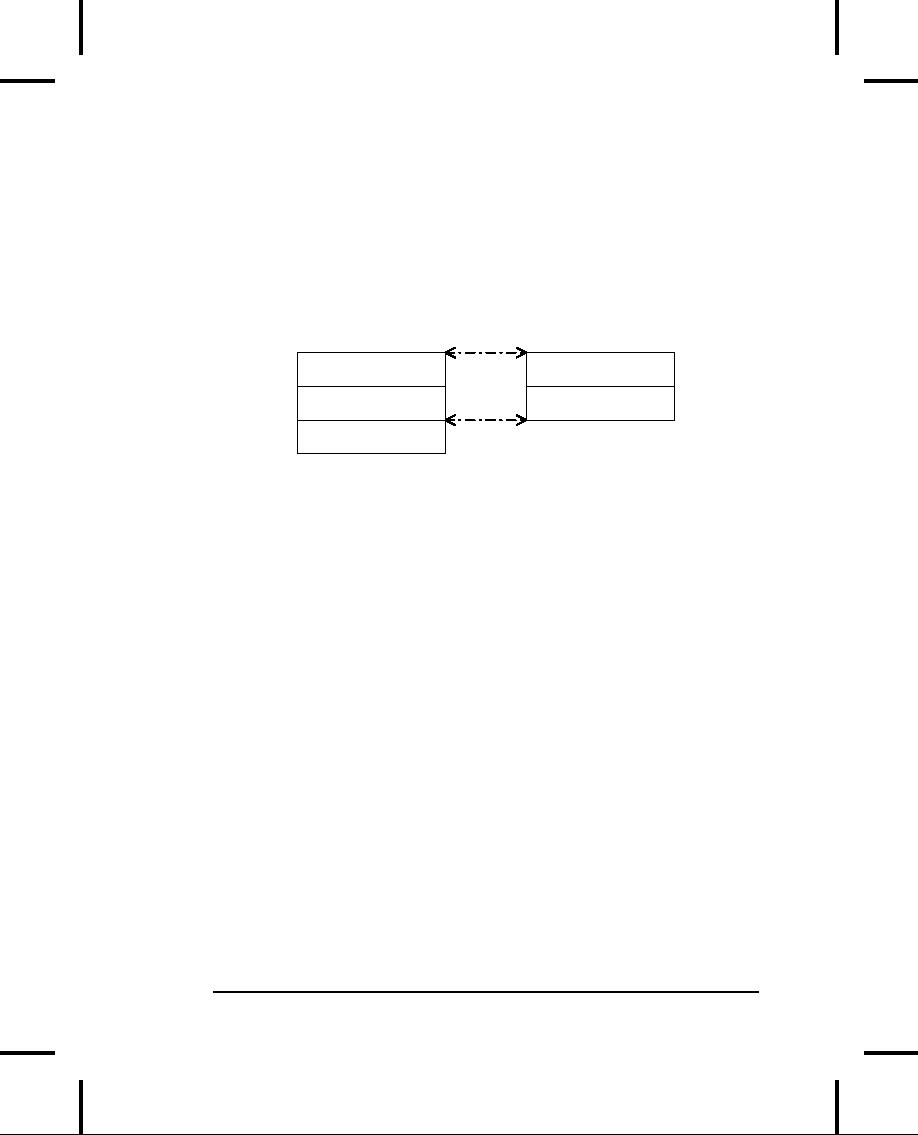
Two
things are happening in this
program. First,
because
describe(
)accepts
a Pet
object
(rather
than a pointer or reference),
any
calls to describe(
)will
cause an object the size of
Pet
to
be
pushed
on the stack and cleaned up
after the call. This
means that if
an
object of a class inherited from
Pet
is
passed to describe(
) the
,
compiler
accepts it, but it copies only
the Pet
portion
of the object.
It
slices
the
derived portion off of the
object, like this:
Before
Slice
After
Slice
Dog
vptr
Pet
vptr
pname
pname
favoriteActivity
Now
you may wonder about the virtual function
call.
Dog::description(
)
makes
use of portions of both
Pet
(which
still
exists)
and Dog,
which no longer exists because it
was sliced off! So
what
happens when the virtual function is
called?
You're
saved from disaster because
the object is being passed
by
value.
Because of this, the
compiler knows the precise type of
the
object
because the derived object
has been forced to become a
base
object.
When passing by value, the
copy-constructor for a Pet
object
is
used, which initializes the
VPTR to the Pet
VTABLE
and copies
only
the Pet
parts
of the object. There's no
explicit copy-constructor
here,
so the compiler synthesizes
one. Under all interpretations,
the
object
truly becomes a Pet
during
slicing.
Object
slicing actually removes
part of the existing object
as it
copies
it into the new object, rather than
simply changing the
meaning
of an address as when using a pointer or
reference.
Because
of this, upcasting into an object is not
done often; in fact,
it's
usually something to watch out for and
prevent. Note that, in
this
example, if description(
)were
made into a pure virtual
function
in the base class (which is not
unreasonable, since it
690
Thinking
in C++
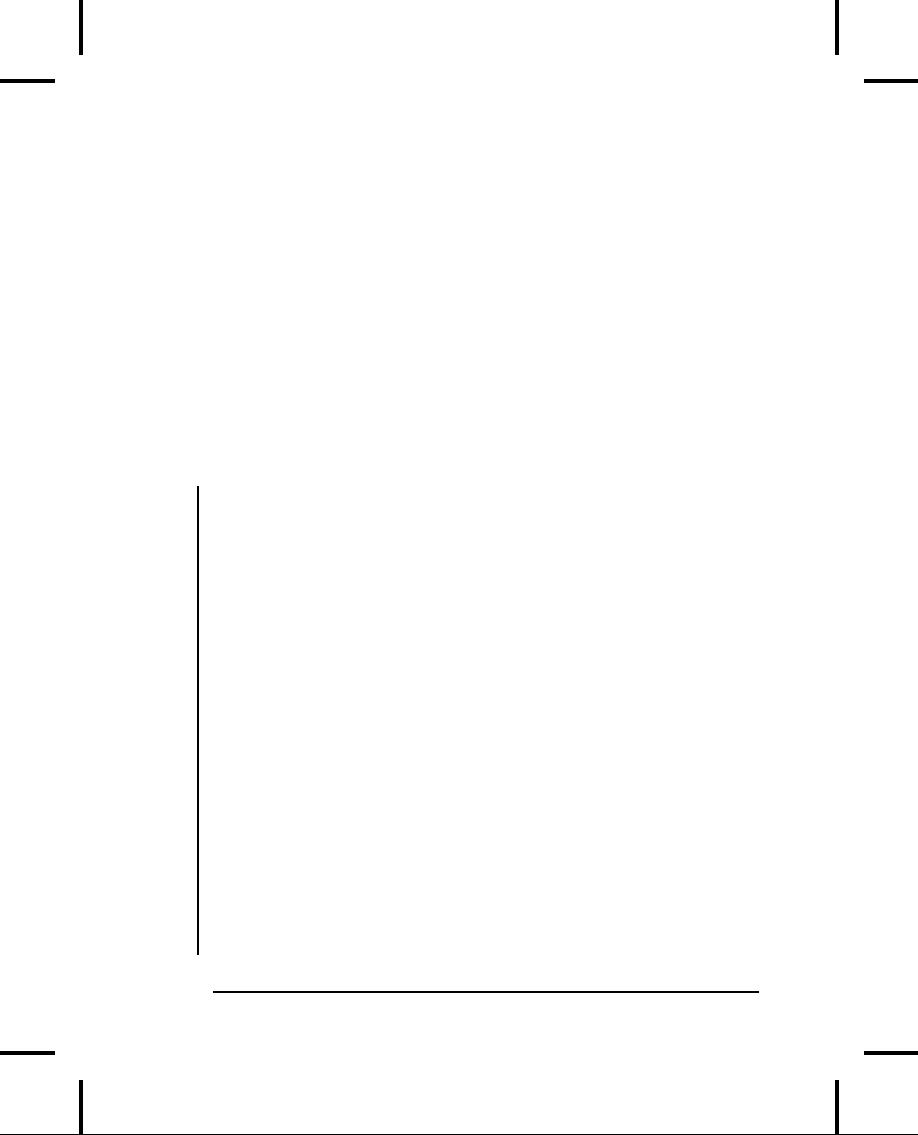
doesn't
really do anything in the base
class), then the
compiler
would
prevent object slicing
because that wouldn't allow you to
"create"
an object of the base type (which is what
happens when
you
upcast by value). This could
be the most important value
of
pure
virtual functions: to prevent object
slicing by generating a
compile-time
error message if someone
tries to do it.
Overloading
& overriding
In
Chapter 14, you saw that
redefining an overloaded function
in
the
base class hides all of the
other base-class versions of
that
function.
When virtual
functions
are involved the behavior is
a
little
different. Consider a modified
version of the
NameHiding.cppexample
from Chapter 14:
//:
C15:NameHiding2.cpp
//
Virtual functions restrict
overloading
#include
<iostream>
#include
<string>
using
namespace std;
class
Base {
public:
virtual
int f() const {
cout
<< "Base::f()\n";
return
1;
}
virtual
void f(string) const
{}
virtual
void g() const {}
};
class
Derived1 : public Base
{
public:
void
g() const {}
};
class
Derived2 : public Base
{
public:
//
Overriding a virtual
function:
int
f() const {
cout
<< "Derived2::f()\n";
15:
Polymorphism & Virtual
Functions
691
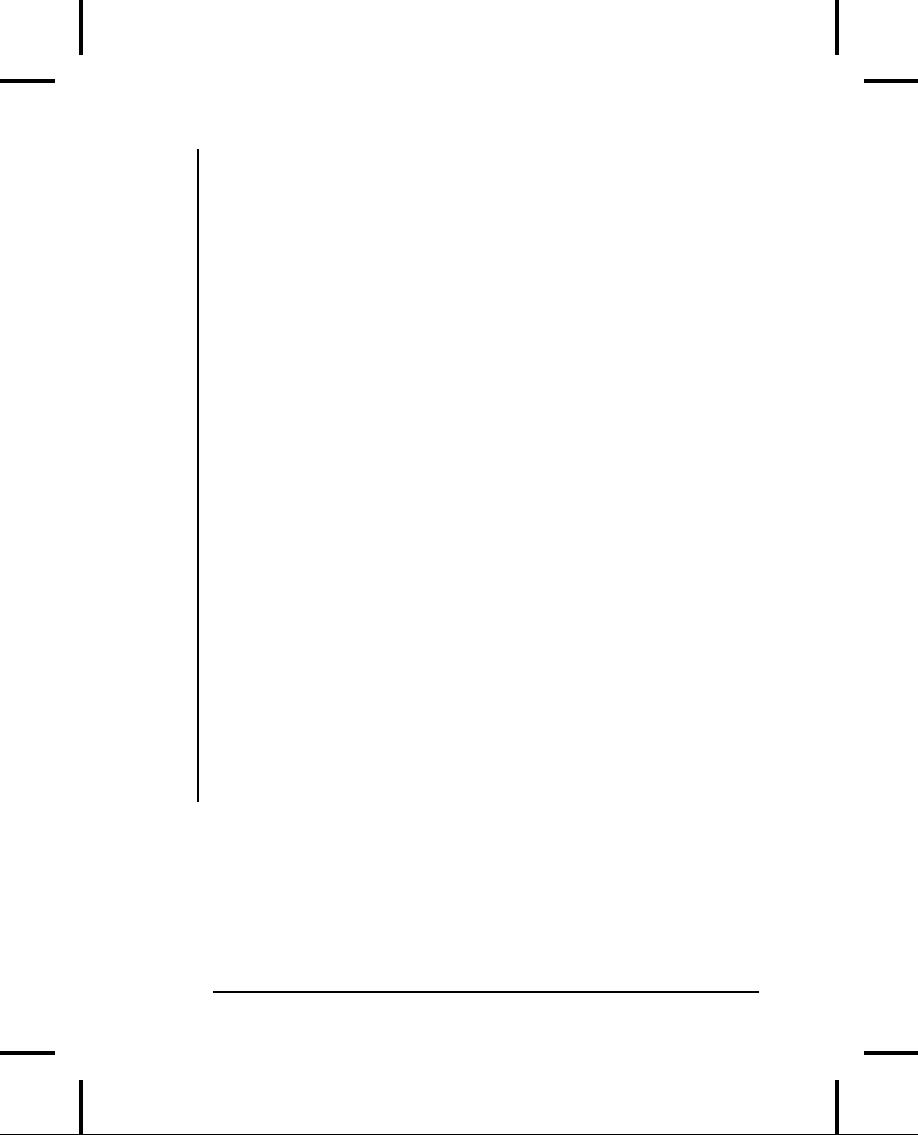
return
2;
}
};
class
Derived3 : public Base
{
public:
//
Cannot change return
type:
//!
void f() const{ cout
<< "Derived3::f()\n";}
};
class
Derived4 : public Base
{
public:
//
Change argument list:
int
f(int) const {
cout
<< "Derived4::f()\n";
return
4;
}
};
int
main() {
string
s("hello");
Derived1
d1;
int
x = d1.f();
d1.f(s);
Derived2
d2;
x
= d2.f();
//!
d2.f(s); // string version
hidden
Derived4
d4;
x
= d4.f(1);
//!
x = d4.f(); // f() version
hidden
//!
d4.f(s); // string version
hidden
Base&
br = d4; // Upcast
//!
br.f(1); // Derived version
unavailable
br.f();
// Base version
available
br.f(s);
// Base version
abailable
}
///:~
The
first thing to notice is that in
Derived3
the
compiler will not
,
allow
you to change the return type of an
overridden function
(it
will
allow it if f(
) is
not virtual). This is an important
restriction
because
the compiler must guarantee
that you can
polymorphically
call
the function through the base
class, and if the base class
is
692
Thinking
in C++
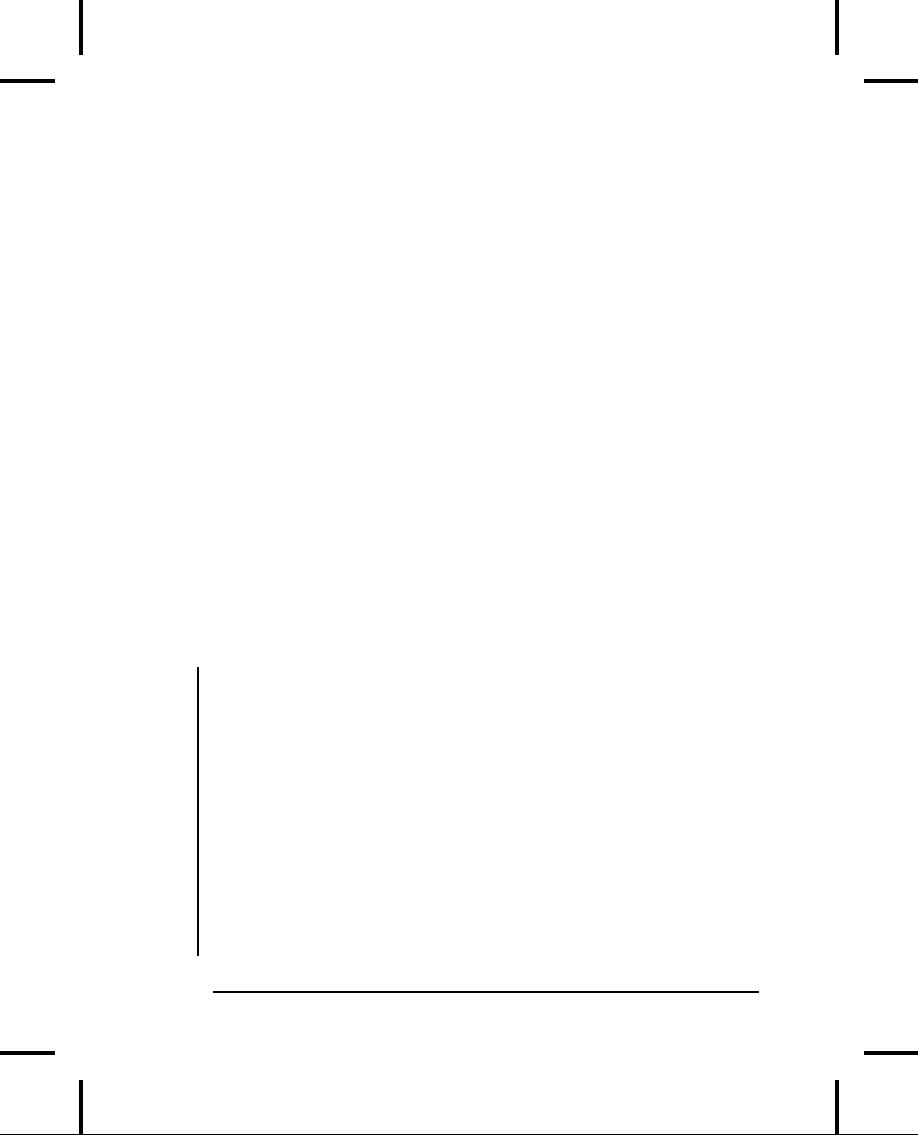
expecting
an int
to
be returned from f(
),
then the derived-class
version
of f(
) must
keep that contract or else
things will break.
The
rule shown in Chapter 14 still works: if
you override one of
the
overloaded
member functions in the base
class, the other
overloaded
versions become hidden in
the derived class. In
main(
)
the
code that tests Derived4shows
that this happens even if
the
new
version of f(
) isn't
actually overriding an existing
virtual
function
interface both of the
base-class versions of f(
) are
hidden
by
f(int).
However, if you upcast d4
to
Base,
then only the base-
class
versions are available
(because that's what the
base-class
contract
promises) and the derived-class
version is not available
(because
it isn't specified in the base
class).
Variant
return type
The
Derived3class
above suggests that you
cannot modify the
return
type of a virtual function during overriding.
This is
generally
true, but there is a special
case in which you can
slightly
modify
the return type. If you're
returning a pointer or a
reference
to
a base class, then the overridden
version of the function
may
return
a pointer or reference to a class
derived from what the base
returns.
For example:
//:
C15:VariantReturn.cpp
//
Returning a pointer or reference to a
derived
//
type during
ovverriding
#include
<iostream>
#include
<string>
using
namespace std;
class
PetFood {
public:
virtual
string foodType() const =
0;
};
class
Pet {
public:
virtual
string type() const =
0;
virtual
PetFood* eats() = 0;
15:
Polymorphism & Virtual
Functions
693

};
class
Bird : public Pet {
public:
string
type() const { return
"Bird"; }
class
BirdFood : public PetFood
{
public:
string
foodType() const {
return
"Bird food";
}
};
//
Upcast to base type:
PetFood*
eats() { return &bf; }
private:
BirdFood
bf;
};
class
Cat : public Pet {
public:
string
type() const { return "Cat";
}
class
CatFood : public PetFood
{
public:
string
foodType() const { return
"Birds"; }
};
//
Return exact type
instead:
CatFood*
eats() { return &cf; }
private:
CatFood
cf;
};
int
main() {
Bird
b;
Cat
c;
Pet*
p[] = { &b, &c, };
for(int
i = 0; i < sizeof p / sizeof *p;
i++)
cout
<< p[i]->type() << " eats
"
<<
p[i]->eats()->foodType() <<
endl;
//
Can return the exact
type:
Cat::CatFood*
cf = c.eats();
Bird::BirdFood*
bf;
//
Cannot return the exact
type:
//!
bf = b.eats();
//
Must downcast:
bf
=
dynamic_cast<Bird::BirdFood*>(b.eats());
}
///:~
694
Thinking
in C++

The
Pet::eats(
)member
function returns a pointer to a
PetFood.
In
Bird,
this member function is
overloaded exactly as in the
base
class,
including the return type. That
is, Bird::eats(
)upcasts
the
BirdFoodto
a PetFood.
But
in Cat,
the return type of eats(
) is
a pointer to CatFood,
a type
derived
from PetFood.
The fact that the return
type is inherited
from
the return type of the base-class
function is the only
reason
this
compiles. That way, the contract is
still fulfilled; eats(
) always
returns
a PetFood
pointer.
If
you think polymorphically, this doesn't
seem necessary. Why not
just
upcast all the return types to
PetFood*
just
as Bird::eats(
)did?
,
This
is typically a good solution, but at
the end of main(
),
you see
the
difference: Cat::eats(
)can
return the exact type of PetFood,
whereas
the return value of Bird::eats(
)must
be downcast to the
exact
type.
So
being able to return the
exact type is a little more
general, and
doesn't
lose the specific type
information by automatically
upcasting.
However, returning the base type will
generally solve
your
problems so this is a rather
specialized feature.
virtual
functions & constructors
When
an object containing virtual functions is
created, its VPTR
must
be initialized to point to the
proper VTABLE. This must
be
done
before there's any possibility of
calling a virtual function. As
you
might guess, because the
constructor has the job of
bringing an
object
into existence, it is also the
constructor's job to set up
the
VPTR.
The compiler secretly
inserts code into the
beginning of the
constructor
that initializes the VPTR.
And as described in Chapter
14,
if you don't explicitly create a
constructor for a class,
the
compiler
will synthesize one for you. If the
class has virtual
functions,
the synthesized constructor will
include the proper
VPTR
initialization code. This
has several
implications.
15:
Polymorphism & Virtual
Functions
695

The
first concerns efficiency.
The reason for inline
functions
is to
reduce
the calling overhead for
small functions. If C++ didn't
provide
inline
functions,
the preprocessor might be used to
create
these
"macros." However, the preprocessor
has no concept of
access
or classes, and therefore couldn't be
used to create member
function
macros. In addition, with constructors
that must have
hidden
code inserted by the
compiler, a preprocessor
macro
wouldn't
work at all.
You
must be aware when hunting for efficiency
holes that the
compiler
is inserting hidden code into your
constructor function.
Not
only must it initialize the VPTR, it must
also check the value
of
this
(in
case the operatornew
returns
zero) and call
base-class
constructors.
Taken together, this code
can impact what you
thought
was a tiny inline function
call. In particular, the
size of the
constructor
may overwhelm the savings you get from
reduced
function-call
overhead. If you make a lot of inline
constructor calls,
your
code size can grow without any
benefits in speed.
Of
course, you probably won't make all tiny
constructors non-
inline
right away, because they're much easier
to write as inlines.
But
when you're tuning your code, remember to
consider removing
the
inline constructors.
Order
of constructor calls
The
second interesting facet of
constructors and virtual functions
concerns
the order of constructor
calls and the way virtual calls
are
made
within constructors.
All
base-class constructors are
always called in the
constructor for
an
inherited class. This makes
sense because the
constructor has a
special
job: to see that the
object is built properly. A derived
class
has
access only to its own members, and not
those of the base
class.
Only
the base-class constructor
can properly initialize its
own
elements.
Therefore it's essential
that all constructors get
called;
otherwise
the entire object wouldn't be
constructed properly.
That's
696
Thinking
in C++

why
the compiler enforces a
constructor call for every
portion of a
derived
class. It will call the
default constructor if you don't
explicitly
call a base-class constructor in
the constructor
initializer
list.
If there is no default constructor,
the compiler will
complain.
The
order of the constructor
calls is important. When you
inherit,
you
know all about the base class and
can access any public
and
protectedmembers
of the base class. This
means you must be able
to
assume that all the members
of the base class are valid
when
you're
in the derived class. In a normal
member function,
construction
has already taken place, so
all the members of all
parts
of
the object have been
built. Inside the
constructor, however, you
must
be able to assume that all
members that you use have
been
built.
The only way to guarantee this is for
the base-class
constructor
to be called first. Then when you're in
the derived-class
constructor,
all the members you can
access in the base class
have
been
initialized. "Knowing all members are
valid" inside the
constructor
is also the reason that,
whenever possible, you
should
initialize
all member objects (that is,
objects placed in the
class
using
composition) in the constructor
initializer list. If you follow
this
practice, you can assume
that all base class members
and
member
objects of the current
object have been
initialized.
Behavior
of virtual functions inside
constructors
The
hierarchy of constructor calls
brings up an interesting
dilemma.
What happens if you're inside a
constructor and you call
a
virtual function? Inside an ordinary
member function you
can
imagine
what will happen the virtual call
is resolved at runtime
because
the object cannot know
whether it belongs to the
class the
member
function is in, or some class
derived from it. For
consistency,
you might think this is what should
happen inside
constructors.
15:
Polymorphism & Virtual
Functions
697

This
is not the case. If you call a virtual
function inside a
constructor,
only the local version of
the function is used. That
is,
the
virtual mechanism doesn't work within the
constructor.
This
behavior makes sense for two
reasons. Conceptually,
the
constructor's
job is to bring the object
into existence (which is
hardly
an ordinary feat). Inside any
constructor, the object
may
only
be partially formed you can only
know that the
base-class
objects
have been initialized, but you
cannot know which classes
are
inherited from you. A virtual function
call, however,
reaches
"forward"
or "outward" into the inheritance
hierarchy. It calls a
function
in a derived class. If you could do
this inside a
constructor,
you'd
be calling a function that might
manipulate members
that
hadn't
been initialized yet, a sure
recipe for disaster.
The
second reason is a mechanical
one. When a constructor is
called,
one of the first things it
does is initialize its VPTR.
However,
it
can only know that it is of the "current"
type the type the
constructor
was written for. The constructor
code is completely
ignorant
of whether or not the object is in
the base of another
class.
When
the compiler generates code
for that constructor, it
generates
code
for a constructor of that class, not a
base class and not a class
derived
from it (because a class can't know who
inherits it). So the
VPTR
it uses must be for the VTABLE of
that
class.
The VPTR
remains
initialized to that VTABLE for
the rest of the
object's
lifetime
unless
this
isn't the last constructor
call. If a more-derived
constructor
is called afterwards, that
constructor sets the VPTR
to
its
VTABLE,
and so on, until the last
constructor finishes. The
state
of
the VPTR is determined by
the constructor that is
called last.
This
is another reason why the
constructors are called in
order from
base
to most-derived.
But
while all this series of constructor
calls is taking place,
each
constructor
has set the VPTR to
its own VTABLE. If it uses
the
virtual
mechanism for function calls, it will
produce only a call
through
its own VTABLE, not the
most-derived VTABLE (as
would
698
Thinking
in C++

be
the case after all
the
constructors were called). In
addition, many
compilers
recognize that a virtual function
call is being made
inside
a
constructor, and perform early
binding because they know
that
late-binding
will produce a call only to the
local function. In
either
event,
you won't get the results you might
initially expect from a
virtual
function call inside a
constructor.
Destructors
and virtual destructors
You
cannot use the virtual
keyword
with constructors, but
destructors
can and often must be
virtual.
The
constructor has the special
job of putting an object
together
piece-by-piece,
first by calling the base
constructor, then the
more
derived
constructors in order of inheritance
(it must also call
member-object
constructors along the way).
Similarly, the
destructor
has a special job: it must
disassemble an object that
may
belong
to a hierarchy of classes. To do this,
the compiler
generates
code
that calls all the
destructors, but in the reverse
order that
they
are
called by the constructor. That
is, the destructor starts at
the
most-derived
class and works its way down to the base
class. This
is
the safe and desirable thing to do
because the current
destructor
can
always know that the
base-class members are alive
and active.
If
you need to call a base-class
member function inside
your
destructor,
it is safe to do so. Thus,
the destructor can perform
its
own
cleanup, then call the
next-down destructor, which will
perform
its
own
cleanup, etc. Each
destructor knows what its
class
is
derived from, but not what is
derived from it.
You
should keep in mind that
constructors and destructors are
the
only
places where this hierarchy
of calls must happen (and thus
the
proper
hierarchy is automatically generated by
the compiler). In all
other
functions, only that
function
will be called (and not
base-class
versions),
whether it's virtual or not.
The only way for base-class
versions
of the same function to be
called in ordinary
functions
(virtual
or not) is if you explicitly
call
that function.
15:
Polymorphism & Virtual
Functions
699

Normally,
the action of the destructor
is quite adequate. But what
happens
if you want to manipulate an object through a
pointer to
its
base class (that is,
manipulate the object through
its generic
interface)?
This activity is a major
objective in object-oriented
programming.
The problem occurs when you want to
delete
a
pointer
of this type for an object that
has been created on the
heap
with
new.
If the pointer is to the base
class, the compiler can
only
know
to call the base-class
version of the destructor during
delete.
Sound
familiar? This is the same
problem that virtual
functions
were
created to solve for the
general case. Fortunately, virtual
functions
work for destructors as they do for all other
functions
except
constructors.
//:
C15:VirtualDestructors.cpp
//
Behavior of virtual vs.
non-virtual destructor
#include
<iostream>
using
namespace std;
class
Base1 {
public:
~Base1()
{ cout << "~Base1()\n"; }
};
class
Derived1 : public Base1
{
public:
~Derived1()
{ cout << "~Derived1()\n"; }
};
class
Base2 {
public:
virtual
~Base2() { cout << "~Base2()\n";
}
};
class
Derived2 : public Base2
{
public:
~Derived2()
{ cout << "~Derived2()\n"; }
};
int
main() {
Base1*
bp = new Derived1; //
Upcast
delete
bp;
Base2*
b2p = new Derived2; //
Upcast
700
Thinking
in C++

delete
b2p;
}
///:~
When
you run the program, you'll see
that delete
bponly
calls the
base-class
destructor, while delete
b2pcalls
the derived-class
destructor
followed by the base-class
destructor, which is the
behavior
we desire. Forgetting to make a
destructor virtual
is
an
insidious
bug because it often doesn't
directly affect the behavior
of
your
program, but it can quietly
introduce a memory leak. Also,
the
fact
that some
destruction
is occurring can further mask
the
problem.
Even
though the destructor, like
the constructor, is an
"exceptional"
function, it is possible for the
destructor to be virtual
because
the object already knows what type it is
(whereas it doesn't
during
construction). Once an object
has been constructed,
its
VPTR
is initialized, so virtual function calls
can take place.
Pure
virtual destructors
While
pure virtual destructors are legal in
Standard C++, there
is
an
added constraint when using
them: you must provide a
function
body
for the pure virtual destructor. This
seems counterintuitive;
how
can a virtual function be "pure" if it
needs a function
body?
But
if you keep in mind that constructors and
destructors are
special
operations it makes more
sense, especially if you
remember
that
all destructors in a class hierarchy
are always called. If
you
could
leave off
the definition for a pure virtual
destructor, what
function
body would be called during destruction?
Thus, it's
absolutely
necessary that the compiler
and linker enforce
the
existence
of a function body for a pure virtual
destructor.
If
it's pure, but it has to
have a function body, what's
the value of
it?
The only difference you'll see
between the pure and
non-pure
virtual
destructor is that the pure virtual
destructor does cause
the
base
class to be abstract, so you cannot
create an object of the
base
15:
Polymorphism & Virtual
Functions
701

class
(although this would also be true if any
other member
function
of the base class were pure
virtual).
Things
are a bit confusing,
however, when you inherit a class
from
one
that contains a pure virtual destructor.
Unlike every other pure
virtual
function, you are not
required
to provide a definition of a
pure
virtual destructor in the derived
class. The fact that
the
following
compiles and links is the
proof:
//:
C15:UnAbstract.cpp
//
Pure virtual
destructors
//
seem to behave
strangely
class
AbstractBase {
public:
virtual
~AbstractBase() = 0;
};
AbstractBase::~AbstractBase()
{}
class
Derived : public AbstractBase
{};
//
No overriding of destructor
necessary?
int
main() { Derived d; }
///:~
Normally,
a pure virtual function in a base class would
cause the
derived
class to be abstract unless it
(and all other pure virtual
functions)
is given a definition. But here,
this seems not to be
the
case.
However, remember that the
compiler automatically
creates
a
destructor
definition for every class if you don't
create one. That's
what's
happening here the base
class destructor is being
quietly
overridden,
and thus the definition is being
provided by the
compiler
and Derived
is
not actually abstract.
This
brings up an interesting question: What
is the point of a pure
virtual
destructor? Unlike an ordinary pure virtual
function, you
must
give it a
function body. In a derived
class, you aren't forced to
provide
a definition since the
compiler synthesizes the
destructor
for
you. So what's the difference
between a regular virtual
destructor
and a pure virtual destructor?
702
Thinking
in C++
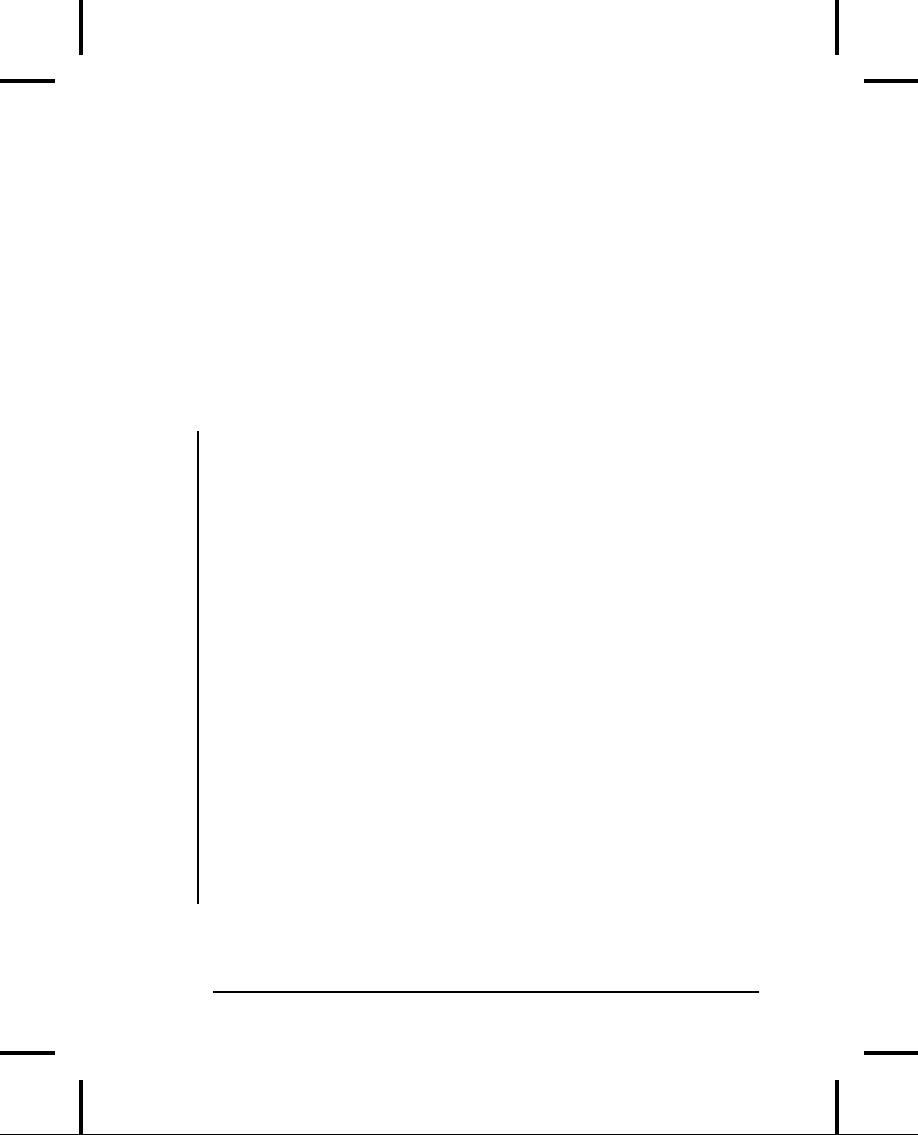
The
only distinction occurs when you have a
class that only has a
single
pure virtual function: the destructor. In
this case, the only
effect
of the purity of the destructor is to
prevent the
instantiation
of
the base class. If there
were any other pure virtual
functions,
they
would prevent the instantiation of
the base class, but if
there
are
no others, then the pure virtual
destructor will do it. So,
while
the
addition of a virtual destructor is
essential, whether it's pure
or
not
isn't so important.
When
you run the following example, you can
see that the pure
virtual
function body is called after
the derived class version,
just
as
with any other destructor:
//:
C15:PureVirtualDestructors.cpp
//
Pure virtual
destructors
//
require a function
body
#include
<iostream>
using
namespace std;
class
Pet {
public:
virtual
~Pet() = 0;
};
Pet::~Pet()
{
cout
<< "~Pet()" << endl;
}
class
Dog : public Pet {
public:
~Dog()
{
cout
<< "~Dog()" << endl;
}
};
int
main() {
Pet*
p = new Dog; //
Upcast
delete
p; // Virtual destructor
call
}
///:~
15:
Polymorphism & Virtual
Functions
703
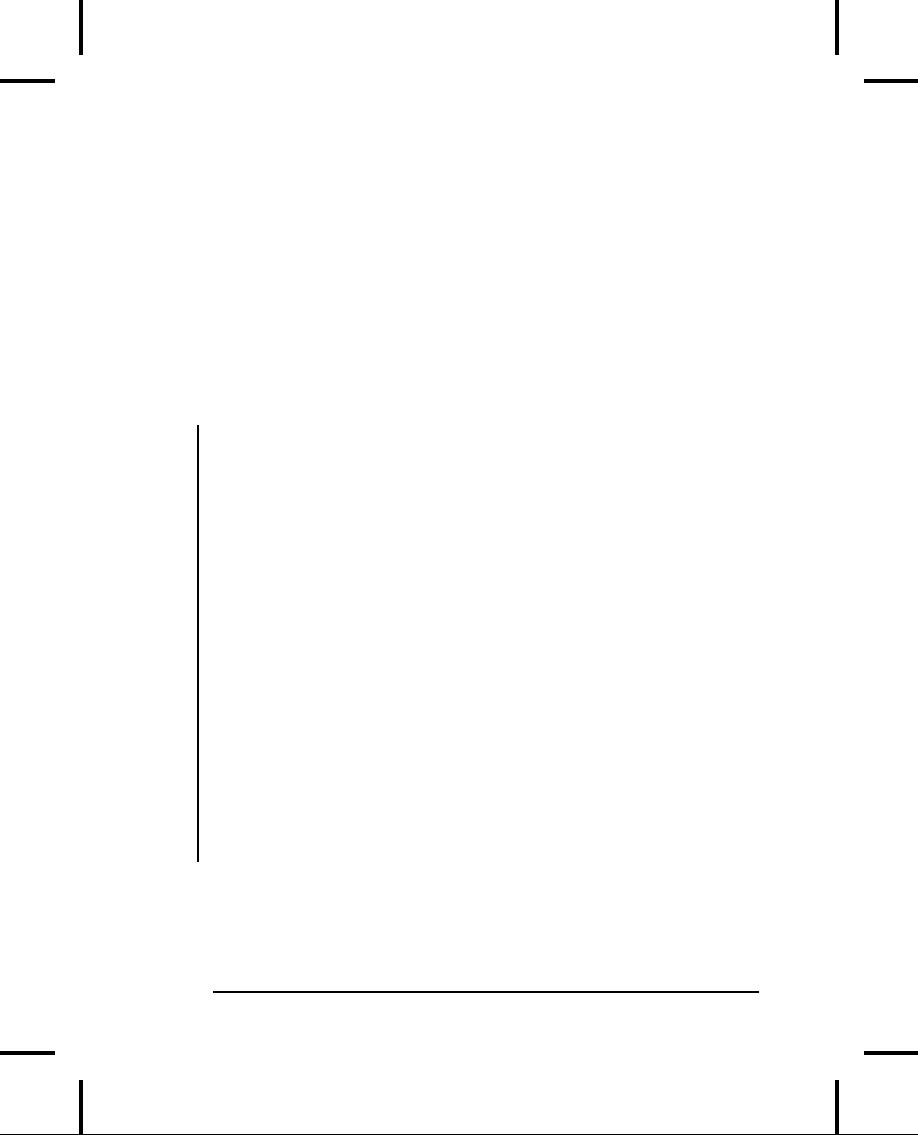
As
a guideline, any time you have a virtual
function in a class, you
should
immediately add a virtual destructor
(even if it does
nothing).
This way, you ensure against any
surprises later.
Virtuals
in destructors
There's
something that happens during
destruction that you might
not
immediately expect. If you're
inside an ordinary
member
function
and you call a virtual function, that
function is called
using
the late-binding mechanism.
This is not true with destructors,
virtual
or not. Inside a destructor, only
the "local" version of
the
member
function is called; the virtual
mechanism is ignored.
//:
C15:VirtualsInDestructors.cpp
//
Virtual calls inside
destructors
#include
<iostream>
using
namespace std;
class
Base {
public:
virtual
~Base() {
cout
<< "Base1()\n";
f();
}
virtual
void f() { cout <<
"Base::f()\n"; }
};
class
Derived : public Base
{
public:
~Derived()
{ cout << "~Derived()\n"; }
void
f() { cout << "Derived::f()\n";
}
};
int
main() {
Base*
bp = new Derived; //
Upcast
delete
bp;
}
///:~
During
the destructor call,
Derived::f(
)is
not
called,
even though
f(
) is
virtual.
704
Thinking
in C++

Why
is this? Suppose the virtual
mechanism were
used
inside the
destructor.
Then it would be possible for the virtual
call to resolve
to
a function that was "farther
out" (more derived) on
the
inheritance
hierarchy than the current
destructor. But destructors
are
called from the "outside in" (from
the most-derived
destructor
down
to the base destructor), so the
actual function called
would
rely
on portions of an object that
have already
been destroyed!
Instead,
the compiler resolves the
calls at compile-time and
calls
only
the "local" version of the
function. Notice that the
same is true
for
the constructor (as
described earlier), but in the
constructor's
case
the type information wasn't
available, whereas in
the
destructor
the information (that is,
the VPTR) is there, but is
isn't
reliable.
Creating
an object-based hierarchy
An
issue that has been
recurring throughout this book during
the
demonstration
of the container classes
Stack
and
Stash
is
the
"ownership
problem." The "owner" refers to who or
what is
responsible
for calling delete
for
objects that have been
created
dynamically
(using new).
The problem when using
containers is
that
they need to be flexible enough to hold
different types of
objects.
To do this, the containers
have held void
pointers
and so
they
haven't known the type of object
they've held. Deleting a
void
pointer
doesn't call the destructor,
so the container couldn't
be
responsible
for cleaning up its
objects.
One
solution was presented in
the example C14:InheritStack.cpp
,
in
which the Stack
was
inherited into a new class that
accepted and
produced
only string
pointers.
Since it knew that it could hold
only
pointers
to string
objects,
it could properly delete
them. This was a
nice
solution, but it requires you to inherit
a new container class for
each
type that you want to hold in the
container. (Although this
seems
tedious now, it will actually work quite
well in Chapter 16,
when
templates are
introduced.)
15:
Polymorphism & Virtual
Functions
705

The
problem is that you want the
container to hold more than
one
type,
but you don't want to use void
pointers.
Another solution is
to
use polymorphism by forcing all
the objects held in the
container
to
be inherited from the same base
class. That is, the
container
holds
the objects of the base
class, and then you can call
virtual
functions
in particular, you can call virtual
destructors to solve
the
ownership problem.
This
solution uses what is referred to as a
singly-rooted
hierarchy or
an
object-based
hierarchy (because
the root class of the
hierarchy is
usually
named "Object"). It turns out that
there are many other
benefits
to using a singly-rooted hierarchy; in
fact, every other
object-oriented
language but C++ enforces the
use of such a
hierarchy
when you create a class, you are
automatically
inheriting
it directly or indirectly from a common
base class, a base
class
that was established by the
creators of the language. In
C++, it
was
thought that the enforced
use of this common base
class would
cause
too much overhead, so it was
left out. However, you
can
choose
to use a common base class in your own
projects, and this
subject
will be examined further in Volume 2 of this
book.
To
solve the ownership problem,
we can create an extremely
simple
Object
for
the base class, which contains only a
virtual destructor.
The
Stack
can
then hold classes inherited from Object:
//:
C15:OStack.h
//
Using a singly-rooted
hierarchy
#ifndef
OSTACK_H
#define
OSTACK_H
class
Object {
public:
virtual
~Object() = 0;
};
//
Required definition:
inline
Object::~Object() {}
class
Stack {
706
Thinking
in C++

struct
Link {
Object*
data;
Link*
next;
Link(Object*
dat, Link* nxt) :
data(dat),
next(nxt) {}
}*
head;
public:
Stack()
: head(0) {}
~Stack(){
while(head)
delete
pop();
}
void
push(Object* dat) {
head
= new Link(dat,
head);
}
Object*
peek() const {
return
head ? head->data : 0;
}
Object*
pop() {
if(head
== 0) return 0;
Object*
result = head->data;
Link*
oldHead = head;
head
= head->next;
delete
oldHead;
return
result;
}
};
#endif
// OSTACK_H ///:~
To
simplify things by keeping
everything in the header
file, the
(required)
definition for the pure virtual
destructor is inlined into
the
header file, and pop(
) (which
might be considered too large
for
inlining)
is also inlined.
Link
objects
now hold pointers to Object
rather
than void
pointers,
and
the Stack
will
only accept and return Object
pointers.
Now
Stack
is
much more flexible, since it will hold
lots of different
types
but
will also destroy any objects
that are left on the
Stack.
The new
limitation
(which will be finally removed when templates
are
applied
to the problem in Chapter
16) is that anything that is
placed
on
the Stack
must
be inherited from Object.
That's fine if you
are
starting
your class from scratch, but what if you
already have a
15:
Polymorphism & Virtual
Functions
707
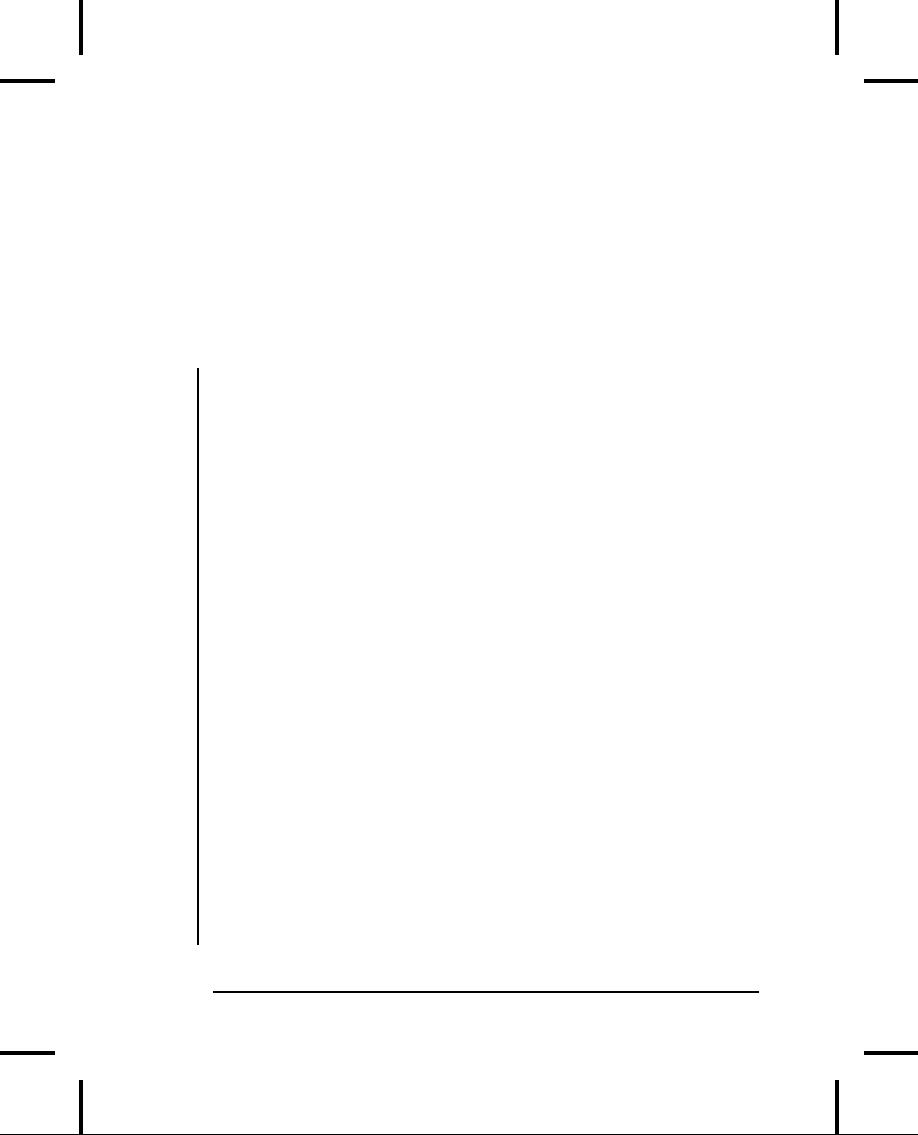
class
such as string
that
you want to be able to put onto the
Stack?
In
this case, the new class must be
both a string
and
an Object,
which
means it must be inherited from both
classes. This is
called
multiple
inheritance and it is
the subject of an entire
chapter in
Volume
2 of this book (downloadable from
).
When
you read that chapter, you'll
see that multiple
inheritance
can
be fraught with complexity, and is a
feature you should
use
sparingly.
In this situation, however,
everything is simple
enough
that
we don't trip across any multiple inheritance
pitfalls:
//:
C15:OStackTest.cpp
//{T}
OStackTest.cpp
#include
"OStack.h"
#include
"../require.h"
#include
<fstream>
#include
<iostream>
#include
<string>
using
namespace std;
//
Use multiple inheritance. We
want
//
both a string and an
Object:
class
MyString: public string,
public Object {
public:
~MyString()
{
cout
<< "deleting string: " <<
*this << endl;
}
MyString(string
s) : string(s) {}
};
int
main(int argc, char* argv[])
{
requireArgs(argc,
1); // File name is
argument
ifstream
in(argv[1]);
assure(in,
argv[1]);
Stack
textlines;
string
line;
//
Read file and store
lines in the stack:
while(getline(in,
line))
textlines.push(new
MyString(line));
//
Pop some lines from
the stack:
MyString*
s;
for(int
i = 0; i < 10; i++) {
if((s=(MyString*)textlines.pop())==0)
break;
708
Thinking
in C++

cout
<< *s << endl;
delete
s;
}
cout
<< "Letting the destructor do
the rest:"
<<
endl;
}
///:~
Although
this is similar to the
previous version of the test
program
for
Stack,
you'll notice that only 10 elements
are popped from the
stack,
which means there are
probably some objects
remaining.
Because
the Stack
knows
that it holds Objects,
the destructor can
properly
clean things up, and you'll see
this in the output of
the
program,
since the MyStringobjects
print messages as they are
destroyed.
Creating
containers that hold Objects
is not an unreasonable
approach
if
you have a
singly-rooted hierarchy (enforced
either
by
the language or by the
requirement that every class
inherit from
Object).
In that case, everything is guaranteed to
be an Object
and
so
it's not very complicated to use
the containers. In C++,
however,
you
cannot expect this from
every class, so you're bound to
trip
over
multiple inheritance if you take this
approach. You'll see in
Chapter
16 that templates solve the
problem in a much simpler and
more
elegant fashion.
Operator
overloading
You
can make operators virtual
just
like other member
functions.
Implementing
virtual
operators
often becomes confusing,
however,
because
you may be operating on two objects, both
with unknown
types.
This is usually the case with
mathematical components
(for
which
you often overload operators).
For example, consider
a
system
that deals with matrices,
vectors and scalar values, all
three
of
which are derived from class
Math:
//:
C15:OperatorPolymorphism.cpp
//
Polymorphism with overloaded
operators
#include
<iostream>
15:
Polymorphism & Virtual
Functions
709

using
namespace std;
class
Matrix;
class
Scalar;
class
Vector;
class
Math {
public:
virtual
Math& operator*(Math& rv)
=
0;
virtual
Math& multiply(Matrix*) =
0;
virtual
Math& multiply(Scalar*) =
0;
virtual
Math& multiply(Vector*) =
0;
virtual
~Math() {}
};
class
Matrix : public Math
{
public:
Math&
operator*(Math& rv) {
return
rv.multiply(this);
//
2nd dispatch
}
Math&
multiply(Matrix*) {
cout
<< "Matrix * Matrix"
<<
endl;
return
*this;
}
Math&
multiply(Scalar*) {
cout
<< "Scalar * Matrix"
<<
endl;
return
*this;
}
Math&
multiply(Vector*) {
cout
<< "Vector * Matrix"
<<
endl;
return
*this;
}
};
class
Scalar : public Math
{
public:
Math&
operator*(Math& rv) {
return
rv.multiply(this); // 2nd
dispatch
}
Math&
multiply(Matrix*) {
cout
<< "Matrix * Scalar" <<
endl;
return
*this;
}
Math&
multiply(Scalar*) {
cout
<< "Scalar * Scalar" <<
endl;
710
Thinking
in C++
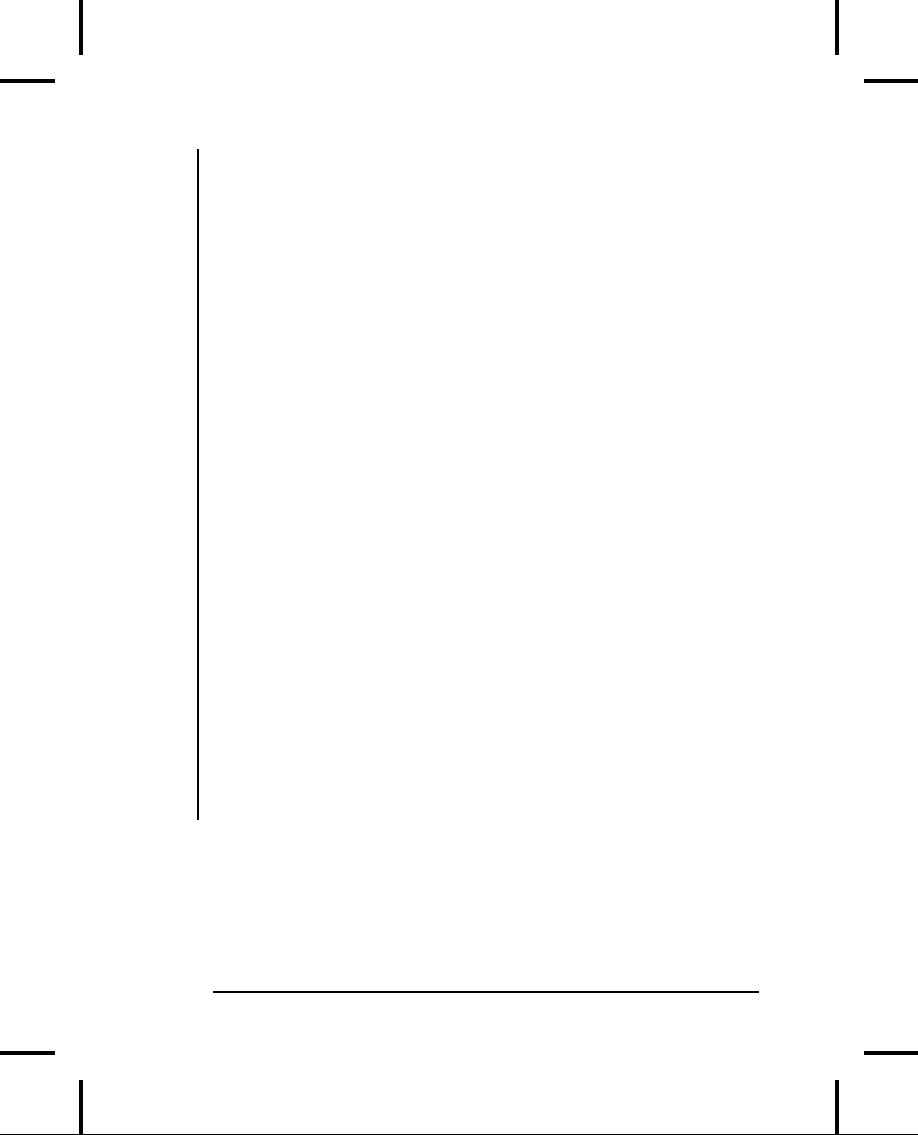
return
*this;
}
Math&
multiply(Vector*) {
cout
<< "Vector * Scalar" <<
endl;
return
*this;
}
};
class
Vector : public Math
{
public:
Math&
operator*(Math& rv) {
return
rv.multiply(this);
//
2nd dispatch
}
Math&
multiply(Matrix*) {
cout
<< "Matrix * Vector"
<<
endl;
return
*this;
}
Math&
multiply(Scalar*) {
cout
<< "Scalar * Vector"
<<
endl;
return
*this;
}
Math&
multiply(Vector*) {
cout
<< "Vector * Vector"
<<
endl;
return
*this;
}
};
int
main() {
Matrix
m; Vector v; Scalar s;
Math*
math[] = { &m, &v, &s };
for(int
i = 0; i < 3; i++)
for(int
j = 0; j < 3; j++) {
Math&
m1 = *math[i];
Math&
m2 = *math[j];
m1
* m2;
}
}
///:~
For
simplicity, only the operator*has
been overloaded. The goal
is
to
be able to multiply any two Math
objects
and produce the
desired
result and note that multiplying a
matrix by a vector is a
very
different operation than multiplying a
vector by a matrix.
15:
Polymorphism & Virtual
Functions
711

The
problem is that, in main(
),
the expression m1
* m2 contains
two
upcast Math
references,
and thus two objects of unknown
type.
A virtual function is only capable of
making a single
dispatch
that is, determining the
type of one unknown object. To
determine
both types a technique
called multiple
dispatching is
used
in
this example, whereby what
appears to be a single virtual
function
call results in a second virtual
call. By the time this
second
call
is made, you've determined both
types of object, and
can
perform
the proper activity. It's not
transparent at first, but if you
stare
at the example for awhile it
should begin to make sense.
This
topic
is explored in more depth in
the Design Patterns chapter
in
Volume
2, which you can download at .
Downcasting
As
you might guess, since there's
such a thing as upcasting
moving
up an inheritance hierarchy there
should also be
downcasting
to move down a
hierarchy. But upcasting is easy
since
as
you move up an inheritance hierarchy the
classes always
converge
to more general classes. That
is, when you upcast you
are
always
clearly derived from an ancestor
class (typically only
one,
except
in the case of multiple inheritance) but
when you downcast
there
are usually several possibilities
that you could cast to.
More
specifically,
a Circle
is
a type of Shape
(that's
the upcast), but if
you
try to downcast a Shape
it
could be a Circle,
Square,
Triangle
,
etc.
So the dilemma is figuring out a way to
safely downcast. (But
an
even more important issue is
asking yourself why
you're
downcasting
in the first place instead
of just using
polymorphism
to
automatically figure out the
correct type. The avoidance
of
downcasting
is covered in Volume 2 of this
book.)
C++
provides a special explicit
cast (introduced
in Chapter 3) called
dynamic_castthat
is a type-safe
downcast operation.
When you use
dynamic_castto
try to cast down to a particular type,
the return
value
will be a pointer to the desired type
only if the cast is
proper
712
Thinking
in C++

and
successful, otherwise it will return zero
to indicate that this
was
not the correct type. Here's
a minimal example:
//:
C15:DynamicCast.cpp
#include
<iostream>
using
namespace std;
class
Pet { public: virtual
~Pet(){}};
class
Dog : public Pet
{};
class
Cat : public Pet
{};
int
main() {
Pet*
b = new Cat; //
Upcast
//
Try to cast it to
Dog*:
Dog*
d1 = dynamic_cast<Dog*>(b);
//
Try to cast it to
Cat*:
Cat*
d2 = dynamic_cast<Cat*>(b);
cout
<< "d1 = " << (long)d1 <<
endl;
cout
<< "d2 = " << (long)d2 <<
endl;
}
///:~
When
you use dynamic_cast
you
must be working with a true
,
polymorphic
hierarchy one with virtual
functions because
dynamic_castuses
information stored in the
VTABLE to determine
the
actual type. Here, the base
class contains a virtual
destructor
and
that suffices. In main(
),
a Cat
pointer
is upcast to a Pet,
and
then
a downcast is attempted to both a
Dog
pointer
and a Cat
pointer.
Both pointers are printed,
and you'll see when you run the
program
that the incorrect downcast
produces a zero result.
Of
course,
whenever you downcast you are
responsible for checking to
make
sure that the result of
the cast is nonzero. Also,
you should
not
assume that the pointer will
be exactly the same,
because
sometimes
pointer adjustments take
place during upcasting and
downcasting
(in particular, with multiple
inheritance).
A
dynamic_castrequires
a little bit of extra
overhead to run; not
much,
but if you're doing a lot of dynamic_cast
(in
which case
ing
you
should be seriously questioning your
program design) this
may
become a performance issue. In
some cases you may know
something
special during downcasting that
allows you to say for
15:
Polymorphism & Virtual
Functions
713
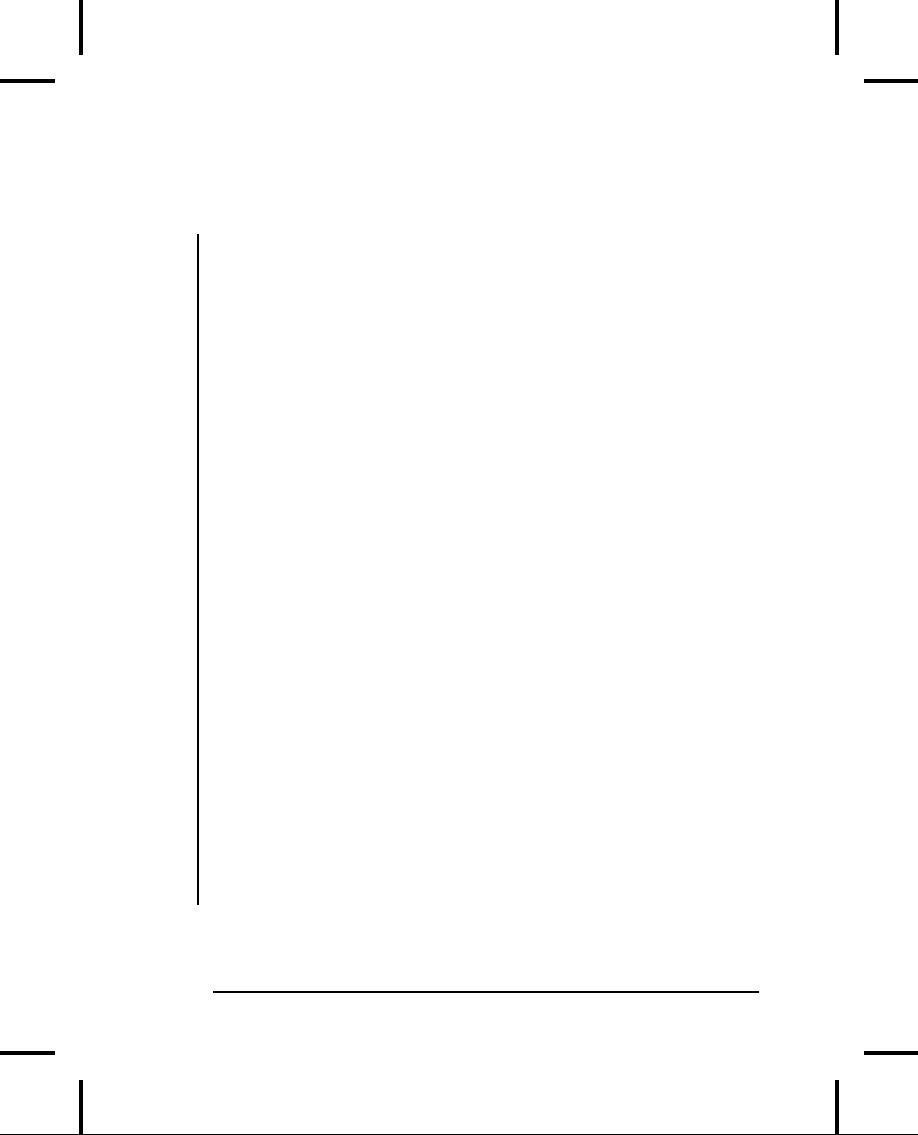
sure
what type you're dealing with, in which case
the extra
overhead
of the dynamic_castbecomes
unnecessary, and you can
use
a static_castinstead.
Here's how it might work:
//:
C15:StaticHierarchyNavigation.cpp
//
Navigating class hierarchies
with static_cast
#include
<iostream>
#include
<typeinfo>
using
namespace std;
class
Shape
{ public: virtual ~Shape()
{}; };
class
Circle
: public Shape {};
class
Square
: public Shape {};
class
Other
{};
int
main() {
Circle
c;
Shape*
s = &c; // Upcast: normal and
OK
//
More explicit but
unnecessary:
s
= static_cast<Shape*>(&c);
//
(Since upcasting is such a
safe and common
//
operation, the cast becomes
cluttering)
Circle*
cp = 0;
Square*
sp = 0;
//
Static Navigation of class
hierarchies
//
requires extra type
information:
if(typeid(s)
== typeid(cp)) // C++
RTTI
cp
= static_cast<Circle*>(s);
if(typeid(s)
== typeid(sp))
sp
= static_cast<Square*>(s);
if(cp
!= 0)
cout
<< "It's a circle!" <<
endl;
if(sp
!= 0)
cout
<< "It's a square!" <<
endl;
//
Static navigation is ONLY an
efficiency hack;
//
dynamic_cast is always safer.
However:
//
Other* op =
static_cast<Other*>(s);
//
Conveniently gives an error
message, while
Other*
op2 = (Other*)s;
//
does not
}
///:~
In
this program, a new feature is
used that is not fully
described
until
Volume 2 of this book, where a
chapter is given to the
topic:
714
Thinking
in C++

C++'s
run-time
type information (RTTI)
mechanism. RTTI allows you
to
discover type information that
has been lost by upcasting.
The
dynamic_castis
actually one form of RTTI. Here,
the typeid
keyword
(declared in the header file
<typeinfo>
is
used to detect
)
the
types of the pointers. You
can see that the type of
the upcast
Shape
pointer
is successively compared to a Circle
pointer
and a
Square
pointer
to see if there's a match.
There's more to RTTI than
typeid,
and you can also imagine
that it would be fairly easy to
implement
your own type information system using a
virtual
function.
A
Circle
object
is created and the address is
upcast to a Shape
pointer;
the second version of the
expression shows how you
can
use
static_castto
be more explicit about the
upcast. However, since
an
upcast is always safe and
it's a common thing to do, I
consider
an
explicit cast for upcasting to be
cluttering and unnecessary.
RTTI
is used to determine the
type, and then static_castis
used to
perform
the downcast. But notice
that in this design the
process is
effectively
the same as using dynamic_cast
and
the client
,
programmer
must do some testing to discover
the cast that
was
actually
successful. You'll typically want a
situation that's more
deterministic
than in the example above
before using static_cast
rather
than dynamic_cast(and,
again, you want to carefully
examine
your design before using
dynamic_cast
).
If
a class hierarchy has no
virtual
functions
(which is a questionable
design)
or if you have other information
that allows you to
safely
downcast,
it's a tiny bit faster to do
the downcast statically
than
with
dynamic_cast
In
addition, static_castwon't
allow you to cast
.
out
of the hierarchy, as the
traditional cast will, so it's
safer.
However,
statically navigating class
hierarchies is always risky
and
you
should use dynamic_castunless
you have a special
situation.
15:
Polymorphism & Virtual
Functions
715

Summary
Polymorphism
implemented in C++ with virtual functions
means
"different forms." In object-oriented
programming, you
have
the same face (the
common interface in the base
class) and
different
forms using that face:
the different versions of
the virtual
functions.
You've
seen in this chapter that
it's impossible to understand,
or
even
create, an example of polymorphism
without using data
abstraction
and inheritance. Polymorphism is a
feature that cannot
be
viewed in isolation (like
const
or
a switch
statement,
for
example),
but instead works only in concert, as
part of a "big
picture"
of class relationships. People
are often confused by
other,
non-object-oriented
features of C++, like
overloading and default
arguments,
which are sometimes presented as
object-oriented.
Don't
be fooled; if it isn't late
binding, it isn't
polymorphism.
To
use polymorphism and thus,
object-oriented techniques
effectively
in your programs you must expand your view
of
programming
to include not just members and
messages of an
individual
class, but also the
commonality among classes and
their
relationships
with each other. Although this
requires significant
effort,
it's a worthy struggle, because
the results are faster
program
development,
better code organization,
extensible programs, and
easier
code maintenance.
Polymorphism
completes the object-oriented
features of the
language,
but there are two more major
features in C++:
templates
(which
are introduced in Chapter 16 and
covered in much more
detail
in Volume 2), and exception handling
(which is covered in
Volume
2). These features provide
you as much increase in
programming
power as each of the object-oriented
features:
abstract
data typing, inheritance, and
polymorphism.
716
Thinking
in C++

Exercises
Solutions
to selected exercises can be found in
the electronic document
The
Thinking in C++
Annotated
Solution
Guide,
available for a small fee
from .
1.
Create
a simple "shape" hierarchy: a base
class called
Shape
and
derived classes called
Circle,
Square,
and
Triangle
In
the base class, make a virtual
function called
.
draw(
),and
override this in the derived
classes. Make an
array
of pointers to Shape
objects
that you create on
the
heap
(and thus perform upcasting of
the pointers), and
call
draw(
) through
the base-class pointers, to verify
the
behavior
of the virtual function. If your
debugger
supports
it, single-step through the
code.
2.
Modify
Exercise 1 so draw(
) is
a pure virtual function.
Try
creating an object of type Shape.
Try to call the pure
virtual
function inside the
constructor and see what
happens.
Leaving it as a pure virtual, give
draw(
) a
definition.
3.
Expanding
on Exercise 2, create a function
that takes a
Shape
object
by
value and try to
upcast a derived object in
as
an argument. See what happens.
Fix the function by
taking
a reference to the Shape
object.
4.
Modify
C14:Combined.cpp
that
f(
) is
virtual
in
the
so
base
class. Change main(
) to
perform an upcast and a
virtual
call.
5.
Modify
Instrument3.cppby
adding a virtual
prepare( )
function.
Call prepare(
)inside
tune(
).
6.
Create
an inheritance hierarchy of Rodent:
Mouse,
Gerbil,
Hamster,
etc. In the base class,
provide methods
that
are common to all Rodents,
and redefine these in
the
derived
classes to perform different
behaviors depending
on
the specific type of Rodent.
Create an array of
pointers
to Rodent,
fill it with different specific types
of
Rodents,
and call your base-class methods to
see what
happens.
15:
Polymorphism & Virtual
Functions
717

7.
Modify
Exercise 6 so that you use a
vector<Rodent*>
instead
of an array of pointers. Make
sure that memory is
cleaned
up properly.
8.
Starting
with the previous Rodent
hierarchy,
inherit
BlueHamsterfrom
Hamster
(yes,
there is such a thing;
I
had
one when I was a kid),
override the
base-class
methods,
and show that the code that
calls the base-class
methods
doesn't need to change in
order to
accommodate
the new type.
9.
Starting
with the previous Rodent
hierarchy,
add a non
virtual
destructor, create an object of
class Hamster
using
new,
upcast the pointer to a
Rodent*,
and delete
the
pointer
to show that it doesn't call all
the destructors in
the
hierarchy. Change the
destructor to be virtual
and
demonstrate
that the behavior is now
correct.
10.
Starting
with the previous Rodent
hierarchy,
modify
Rodent
so
it is a pure abstract base class.
11.
Create
an air-traffic control system with
base-class
Aircraftand
various derived types.
Create a Tower
class
with
a vector<Aircraft*>
that
sends the appropriate
messages
to the various aircraft under
its control.
12.
Create
a model of a greenhouse by inheriting
various
types
of Plant
and
building mechanisms into your
greenhouse
that take care of the
plants.
13.
In
Early.cpp
make
Pet
a
pure abstract base class.
,
14.
In
AddingVirtuals.cppmake
all the member
functions
,
of
Pet
pure
virtuals, but provide a definition for
name(
).
Fix
Dog
as
necessary, using the
base-class definition of
name(
).
15.
Write
a small program to show the
difference between
calling
a virtual function inside a normal
member
function
and calling a virtual function inside
a
constructor.
The program should prove
that the two calls
produce
different results.
718
Thinking
in C++

16.
Modify
VirtualsInDestructors.cpp
inheriting
a class
by
from
Derived
and
overriding f(
) and
the destructor. In
main(
),
create and upcast an object of your new
type,
then
delete
it.
17.
Take
Exercise 16 and add calls to
f(
) in
each destructor.
Explain
what happens.
18.
Create
a class that has a data
member and a derived
class
that
adds another data member.
Write a non-member
function
that takes an object of the
base class by
value and
prints
out the size of that object
using sizeof.
In main(
)
create
an object of the derived
class, print out its size,
and
then
call your function. Explain what
happens.
19.
Create
a simple example of a virtual function
call and
generate
assembly output. Locate the
assembly code for
the
virtual call and trace and explain
the code.
20.
Write
a class with one virtual function and
one non-
virtual
function. Inherit a new class, make an
object of
this
class, and upcast to a pointer of
the base-class type.
Use
the clock(
)function
found in <ctime>
(you'll
need
to
look this up in your local C
library guide) to
measure
the
difference between a virtual call and
non-virtual call.
You'll
need to make multiple calls to
each function inside
your
timing loop in order to see
the difference.
21.
Modify
C14:Order.cppby
adding a virtual function in
the
base class of the CLASS
macro
(have it print
something)
and by making the destructor
virtual. Make
objects
of the various subclasses and
upcast them to the
base
class. Verify that the virtual
behavior works and
that
proper construction and destruction
takes place.
22.
Write
a class with three overloaded virtual
functions.
Inherit
a new class from this and override
one of the
functions.
Create an object of your derived
class. Can you
call
all the base class functions through
the derived-class
object?
Upcast the address of the
object to the base.
Can
you
call all three functions through
the base? Remove
the
overridden
definition in the derived
class. Now can you
15:
Polymorphism & Virtual
Functions
719

call
all the base class functions through
the derived-class
object?
23.
Modify
VariantReturn.cpp
show
that its behavior
to
works
with references as well as
pointers.
24.
In
Early.cpp
how
can you tell whether the
compiler
,
makes
the call using early or
late binding? Determine
the
case
for your own compiler.
25.
Create
a base class containing a clone(
)function
that
returns
a pointer to a copy
of the
current object. Derive
two
subclasses that override
clone(
)to
return copies of
their
specific types. In main(
),
create and upcast
objects
of
your two derived types, then call
clone(
)for
each and
verify
that the cloned copies
are the correct
subtypes.
Experiment
with your clone(
)function
so that you
return
the base type, then try returning
the exact derived
type.
Can you think of situations in which the
latter
approach
is necessary?
26.
Modify
OStackTest.cppby
creating your own class, then
multiply-inheriting
it with Object
to
create something
that
can be placed into the
Stack.
Test your class in
main(
).
27.
Add
a type called Tensor
to
OperatorPolymorphism.cpp
.
28.
(Intermediate)
Create a base class
X with
no data
members
and no constructor, but with a virtual
function.
Create
a class
Y that
inherits from X,
but without an
explicit
constructor. Generate assembly
code and
examine
it to determine if a constructor is
created and
called
for X,
and if so, what the code
does. Explain what
you
discover. X
has
no default constructor, so why
doesn't
the compiler
complain?
29.
(Intermediate)
Modify Exercise 28 by writing
constructors
for both classes so that each
constructor calls
a
virtual function. Generate assembly
code. Determine
where
the VPTR is being assigned
inside each
constructor.
Is the virtual mechanism being
used by your
720
Thinking
in C++

compiler
inside the constructor?
Establish why the
local
version
of the function is still
being called.
30.
(Advanced)
If function calls to an object
passed by value
weren't
early-bound,
a virtual call might access parts
that
didn't
exist. Is this possible?
Write some code to force
a
virtual
call, and see if this causes
a crash. To explain
the
behavior,
examine what happens when you pass
an
object
by value.
31.
(Advanced)
Find out exactly how much more
time is
required
for a virtual function call by going to
your
processor's
assembly-language information or
other
technical
manual and finding out the number of
clock
states
required for a simple call
versus the number
required
for the virtual function
instructions.
32.
Determine
the sizeof
the
VPTR for your implementation.
Now
multiply-inherit two classes that contain
virtual
functions.
Did you get one VPTR or two in
the derived
class?
33.
Create
a class with data members and virtual
functions.
Write
a function that looks at the
memory in an object of
your
class and prints out the
various pieces of it. To
do
this
you will need to experiment and
iteratively discover
where
the VPTR is located in the
object.
34.
Pretend
that virtual functions don't exist, and
modify
Instrument4.cppso
that it uses dynamic_castto
make
the
equivalent of the virtual calls.
Explain why this is a
bad
idea.
35.
Modify
StaticHierarchyNavigation.cpp
that
instead of
so
using
C++ RTTI you create your own RTTI via a virtual
function
in the base class called
whatAmI(
)and
an
enum
type { Circles, Squares.
};
36.
Start
with PointerToMemberOperator.cpp
from
Chapter
12
and show that polymorphism still works
with
pointers-to-members,
even if operator->*is
overloaded.
15:
Polymorphism & Virtual
Functions
721
Table of Contents:
- Introduction to Objects:The progress of abstraction, Extreme programming
- Making & Using Objects:Tools for separate compilation, Reading and writing files
- The C in C++:Creating functions, Controlling execution, Introduction to operators
- Data Abstraction:The basic object, Abstract data typing, Header file etiquette
- Hiding the Implementation:C++ access control, Handle classes
- Initialization & Cleanup:Guaranteed cleanup with the destructor, Aggregate initialization
- Function Overloading & Default Arguments:Overloading example, Default arguments
- Constants:Function arguments & return values, Classes, volatile
- Inline Functions:Preprocessor pitfalls, Stash & Stack with inlines, Reducing clutter
- Name Control:Static elements from C, Static initialization dependency, specifications
- References & the Copy-Constructor:The copyconstructor, Pointers to members
- Operator Overloading:Overloadable operators, Overloading assignment
- Dynamic Object Creation:Early examples redesigned, new & delete for arrays
- Inheritance & Composition:The constructor initializer list, Name hiding
- Polymorphism & Virtual Functions:The problem, How C++ implements late binding
- Introduction to Templates:Template syntax, Stack and Stash as templates
- A: Coding Style
- B: Programming Guidelines
- C: Recommended Reading:Depth & dark corners, Analysis & design
- Index